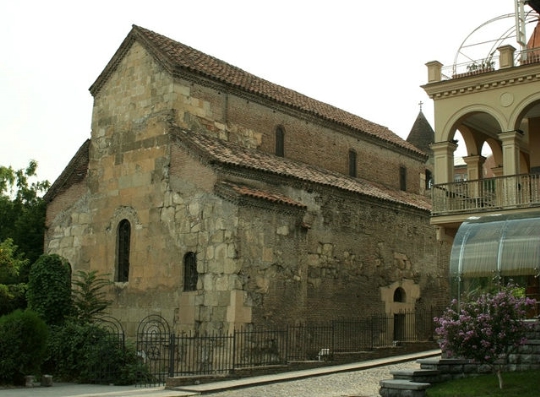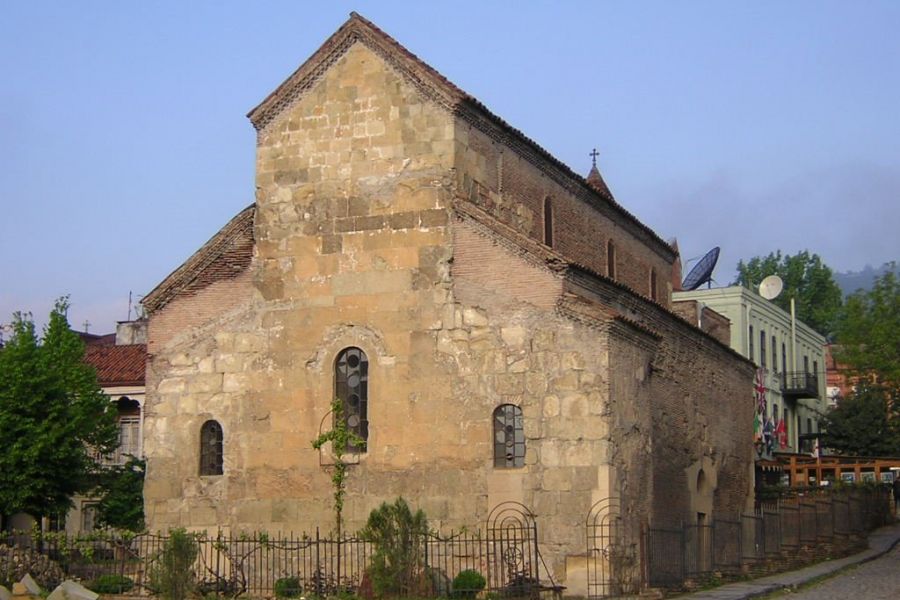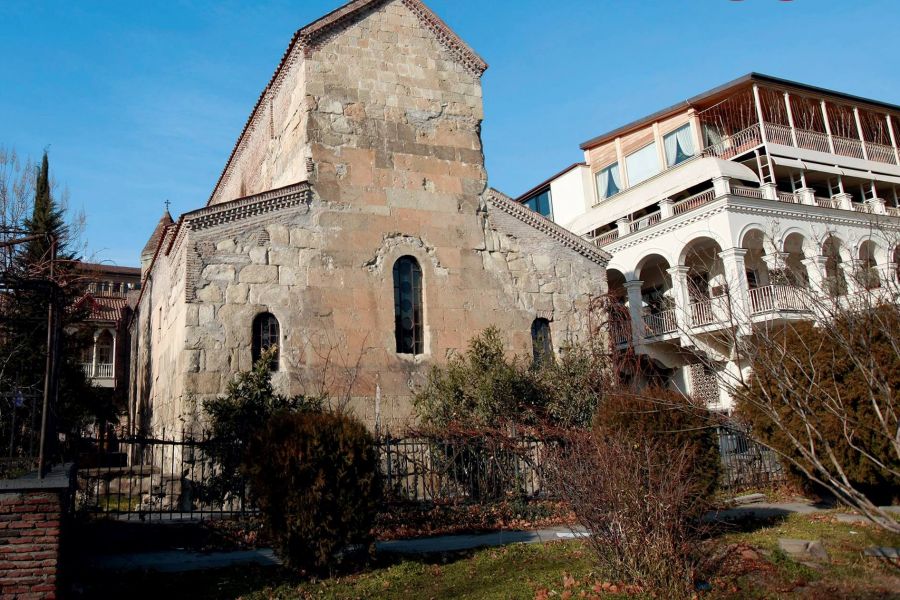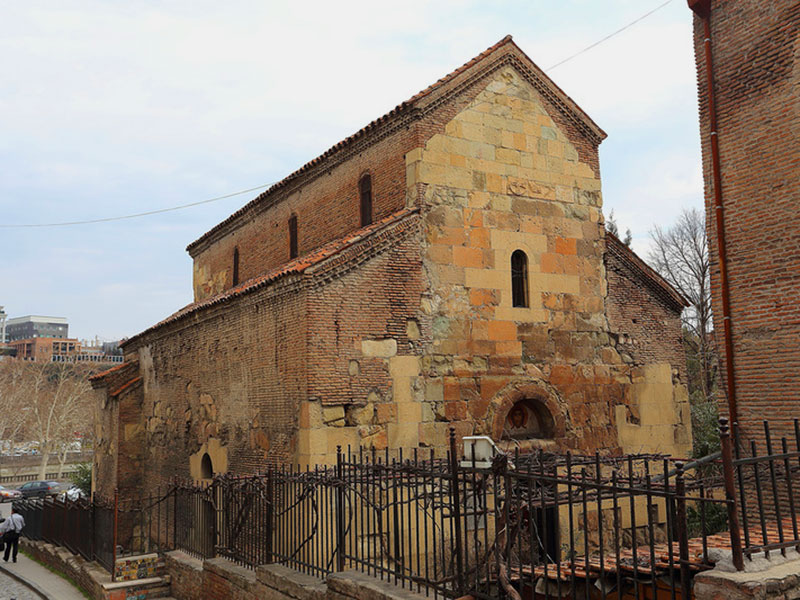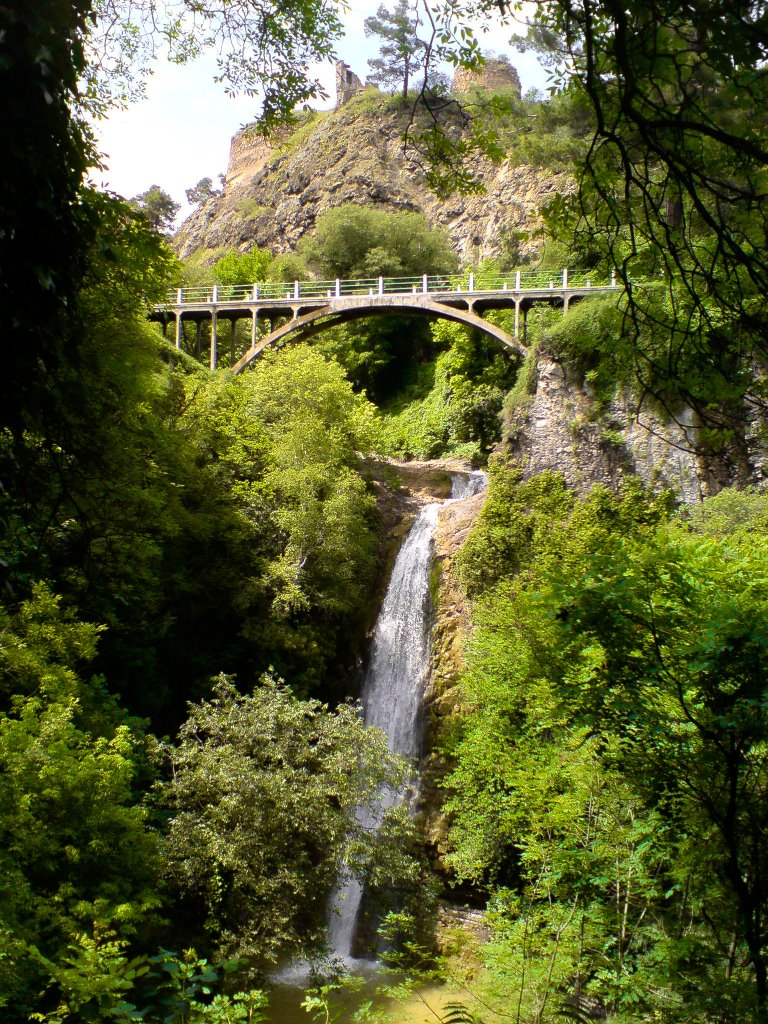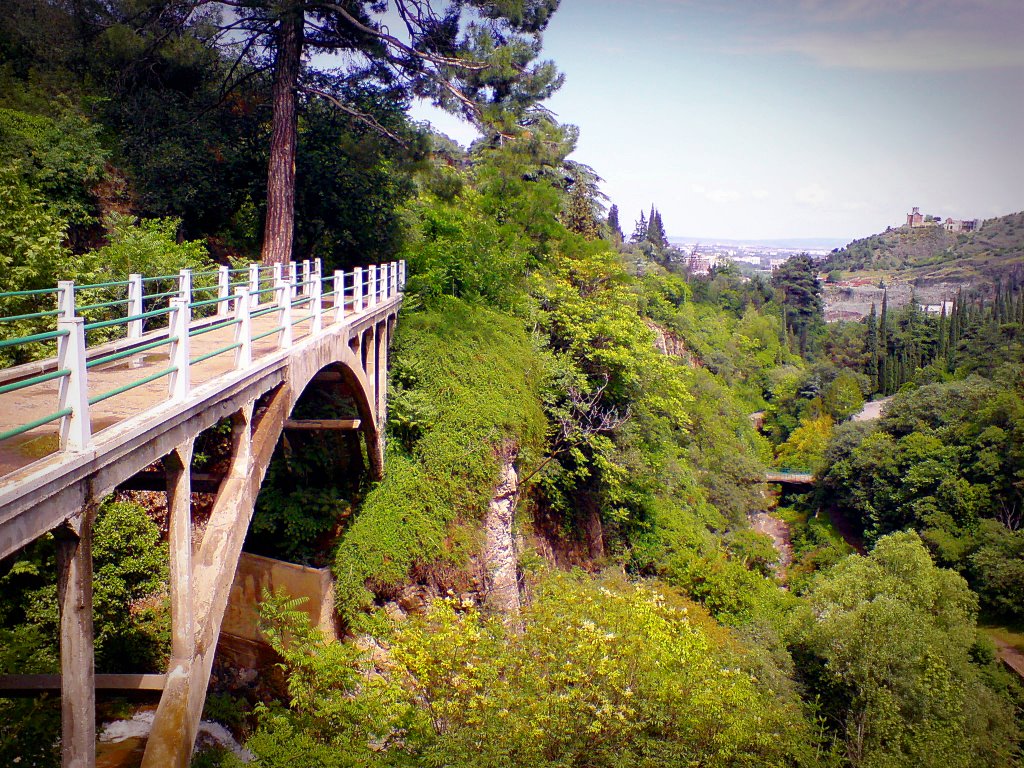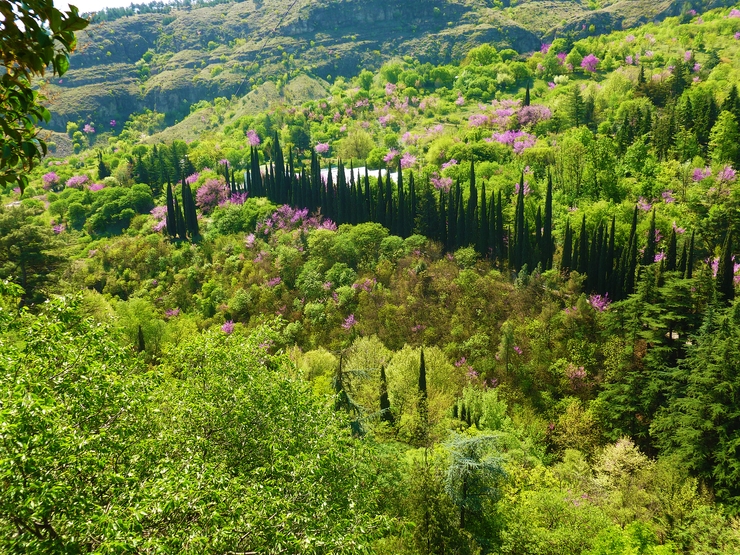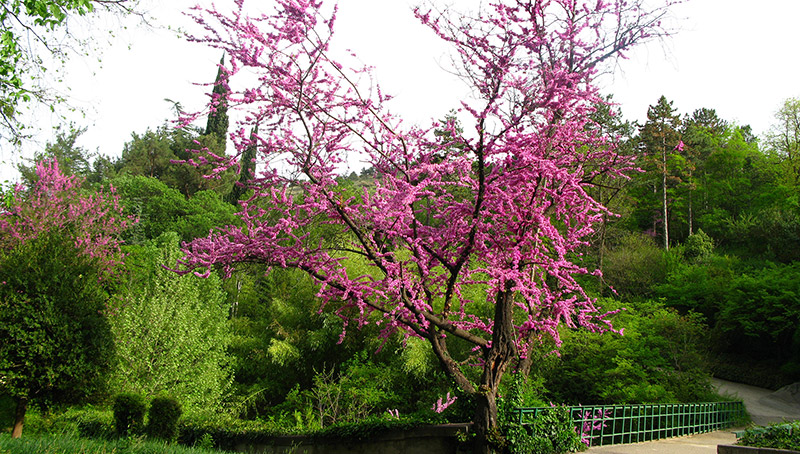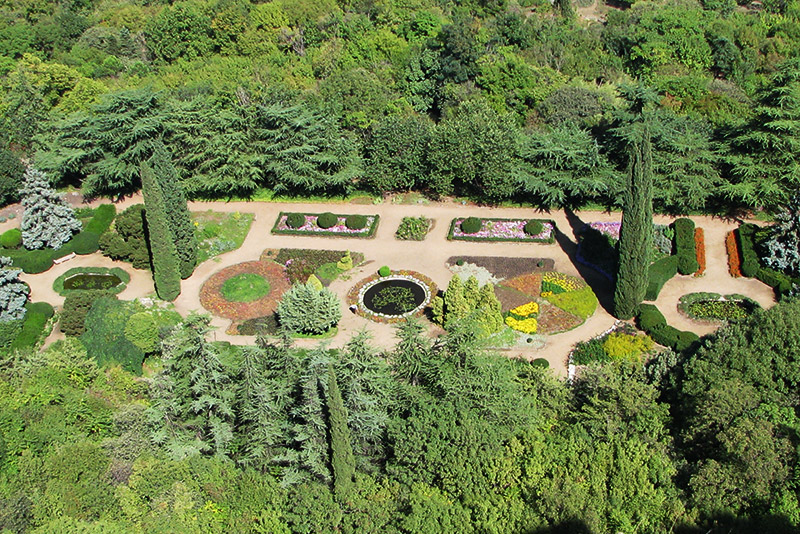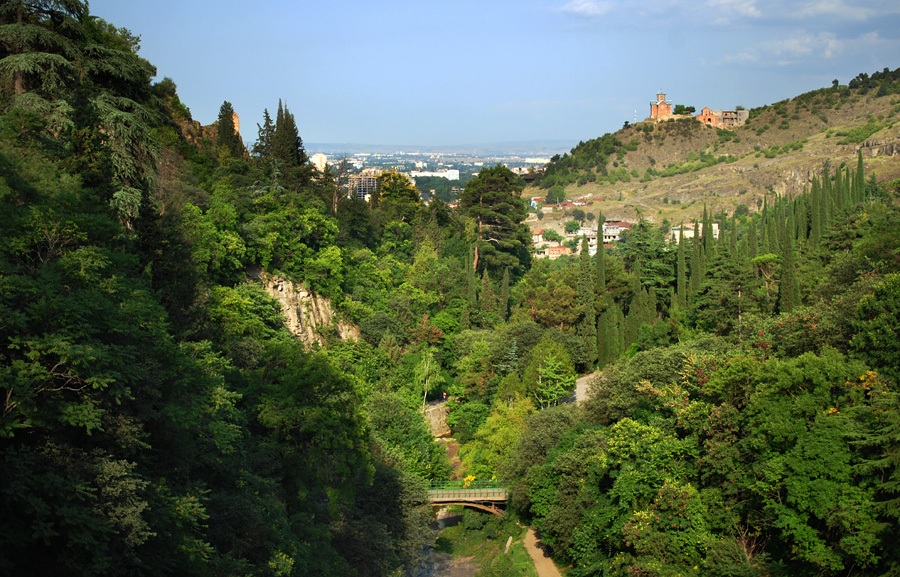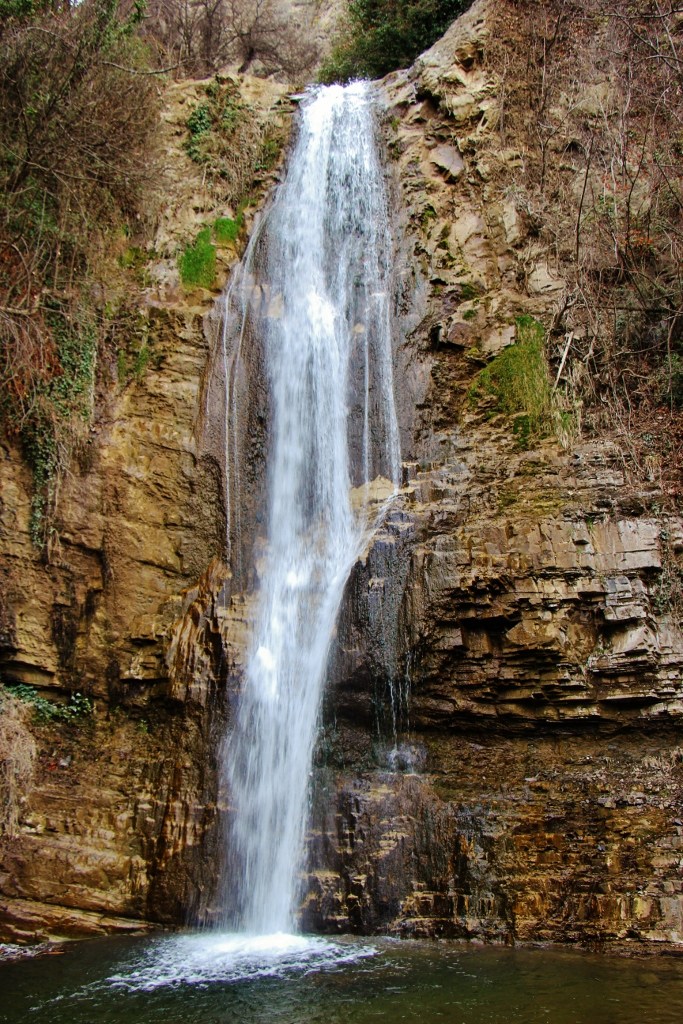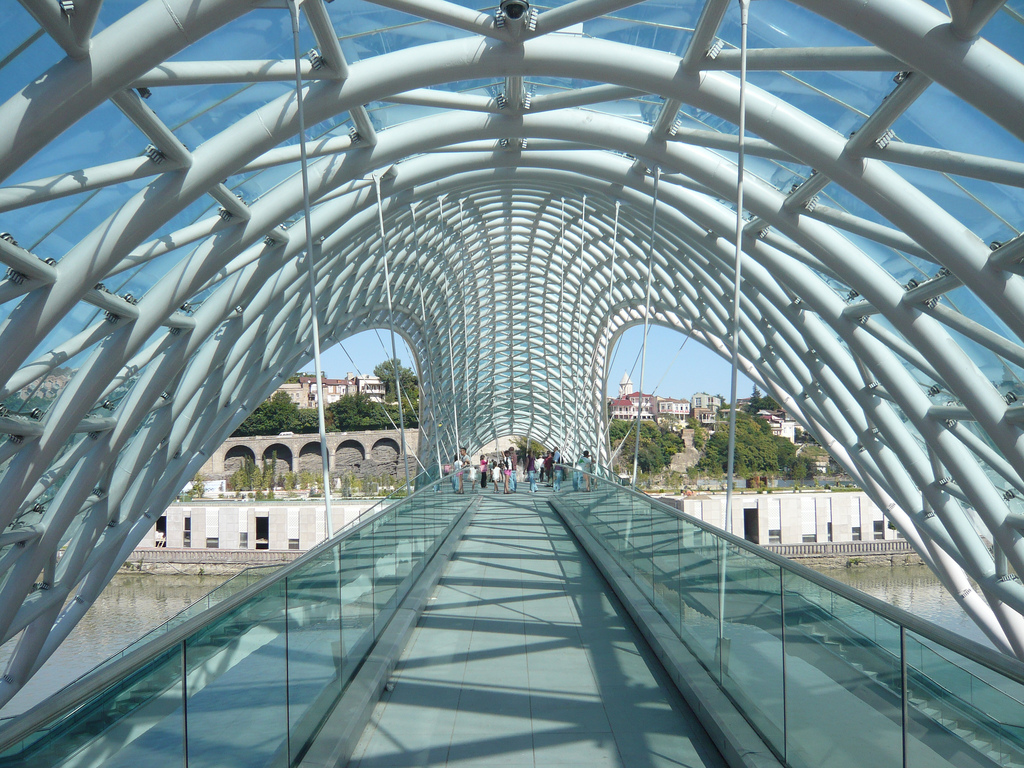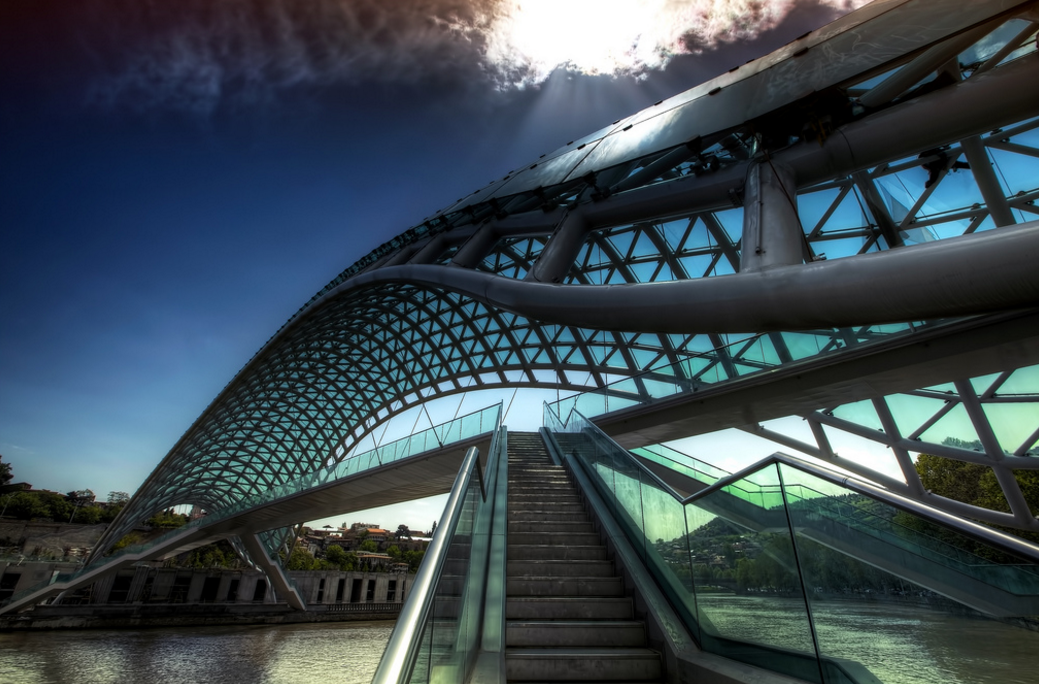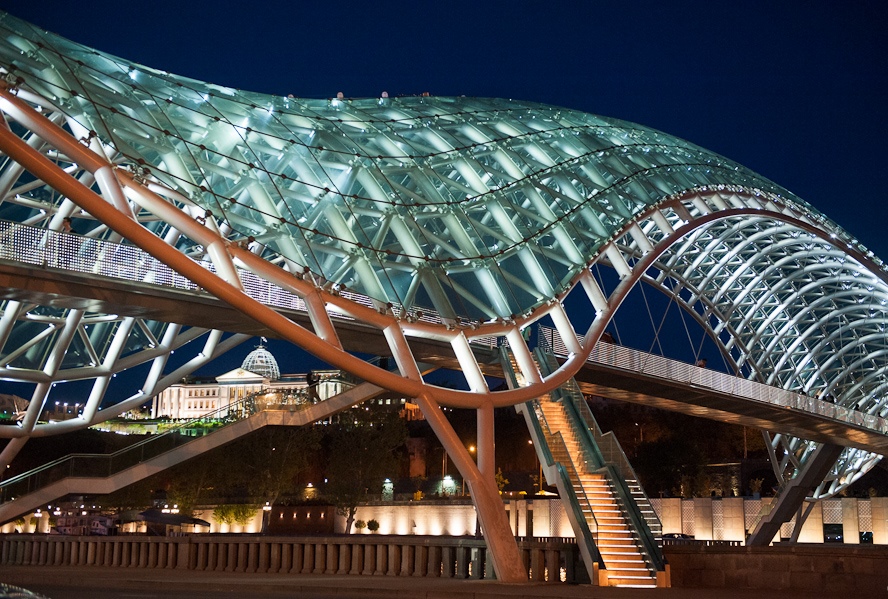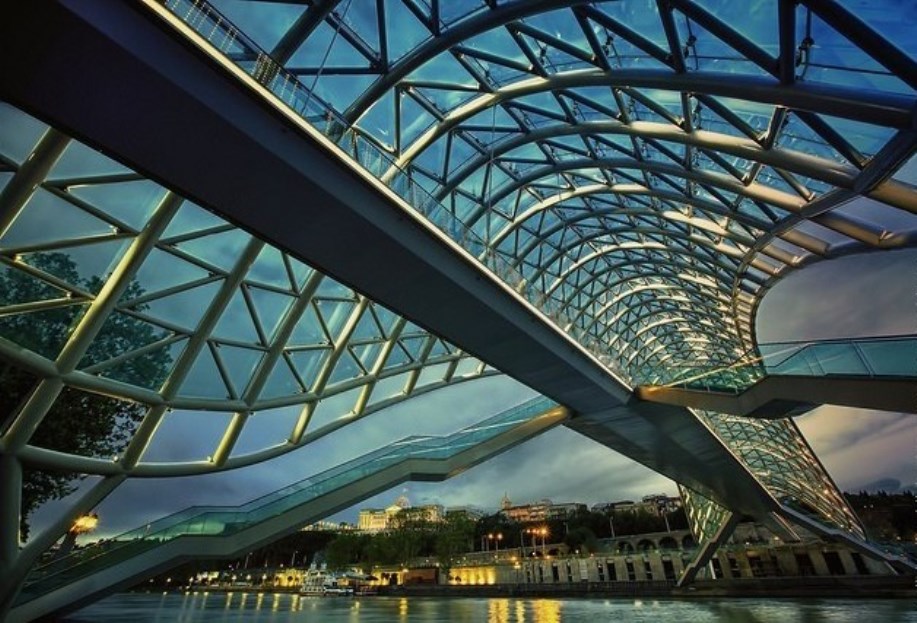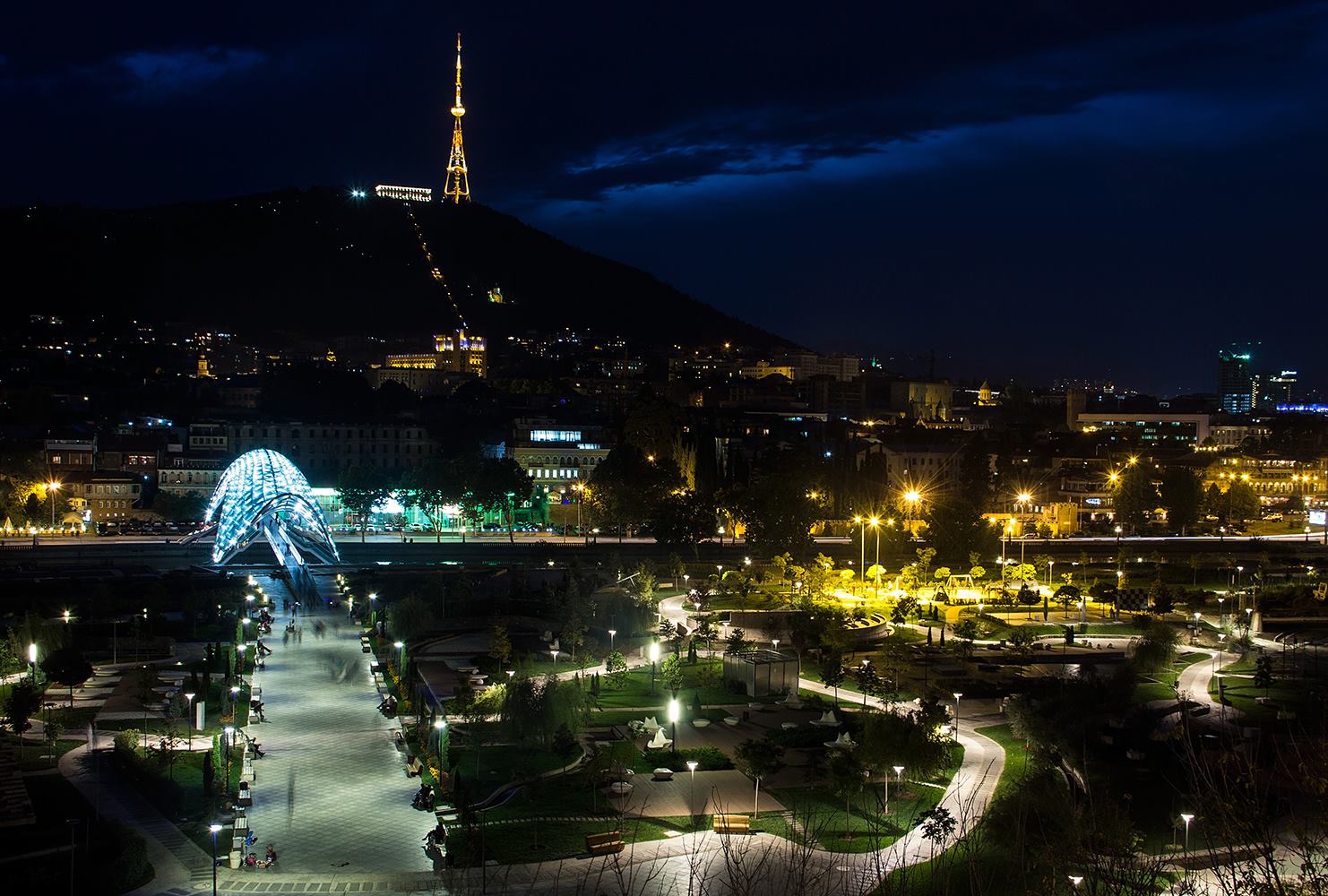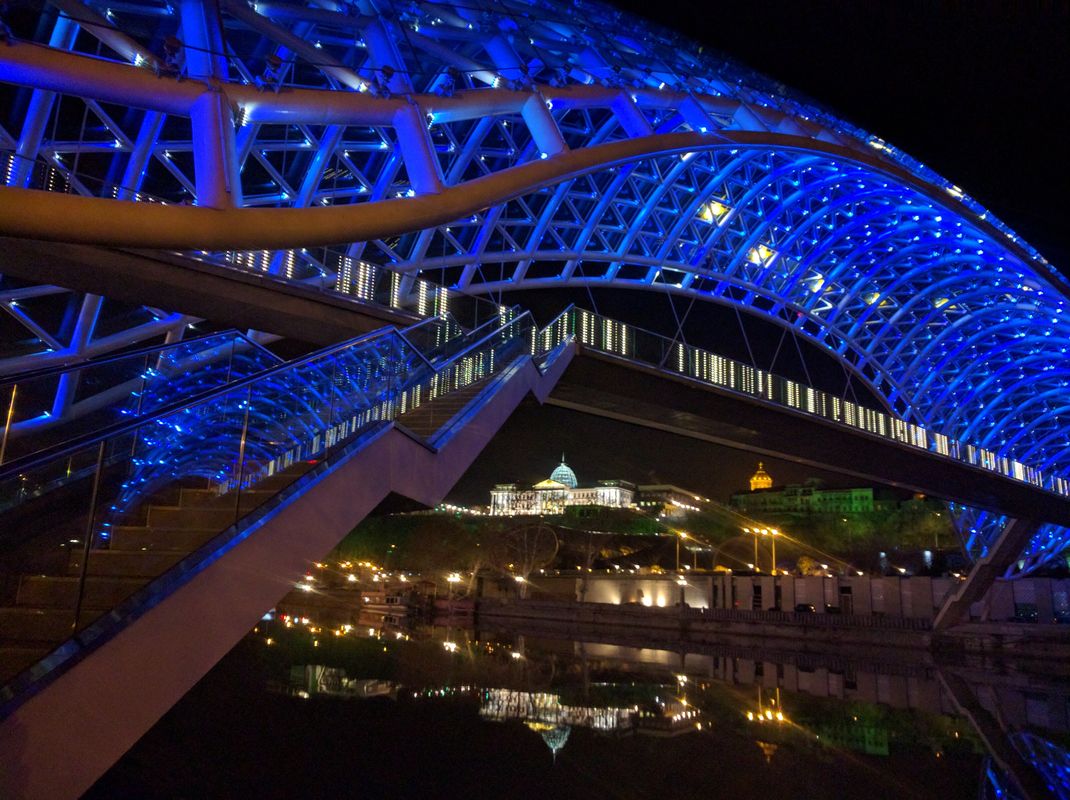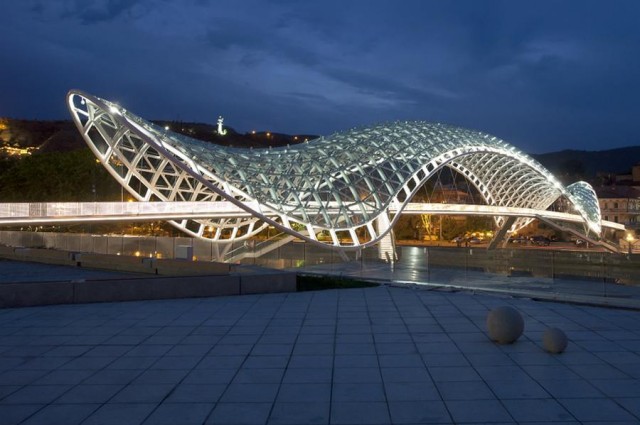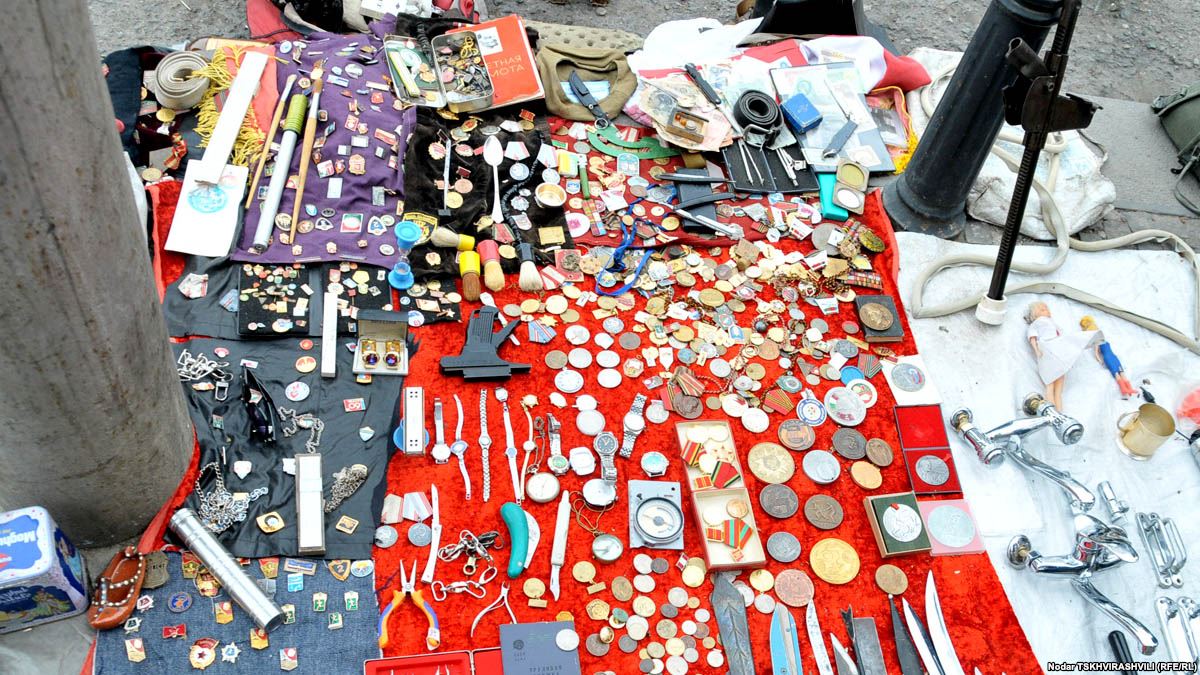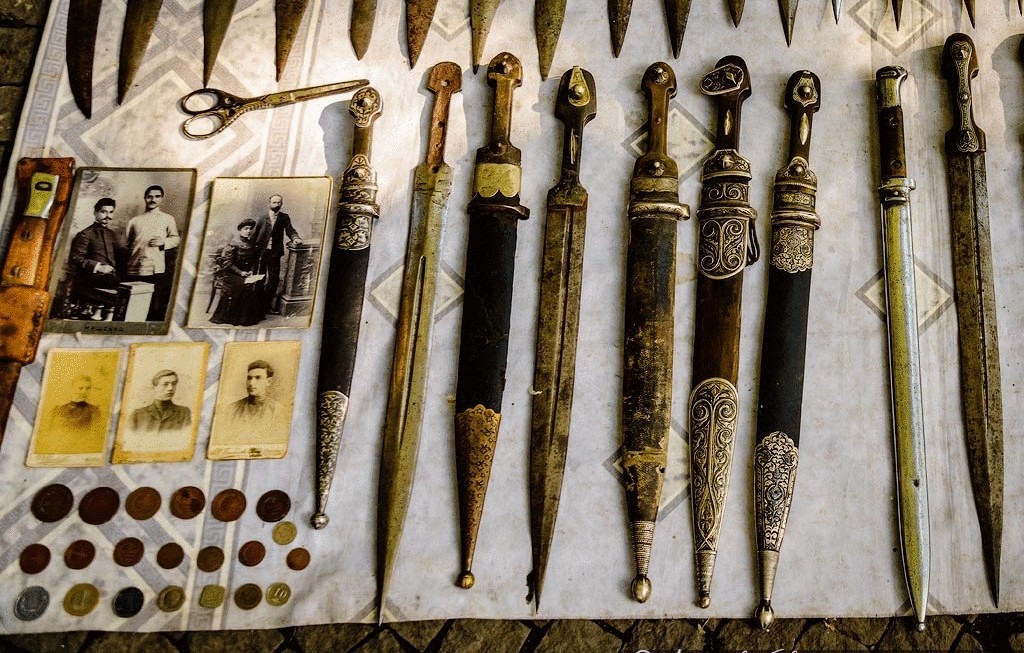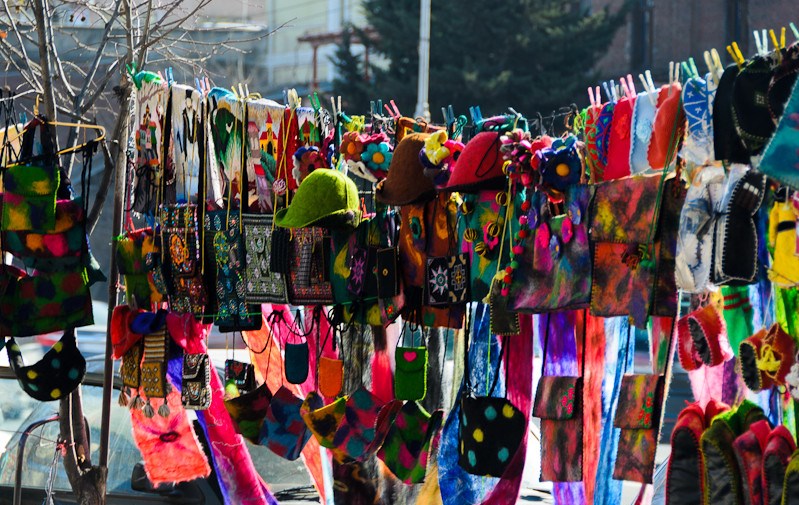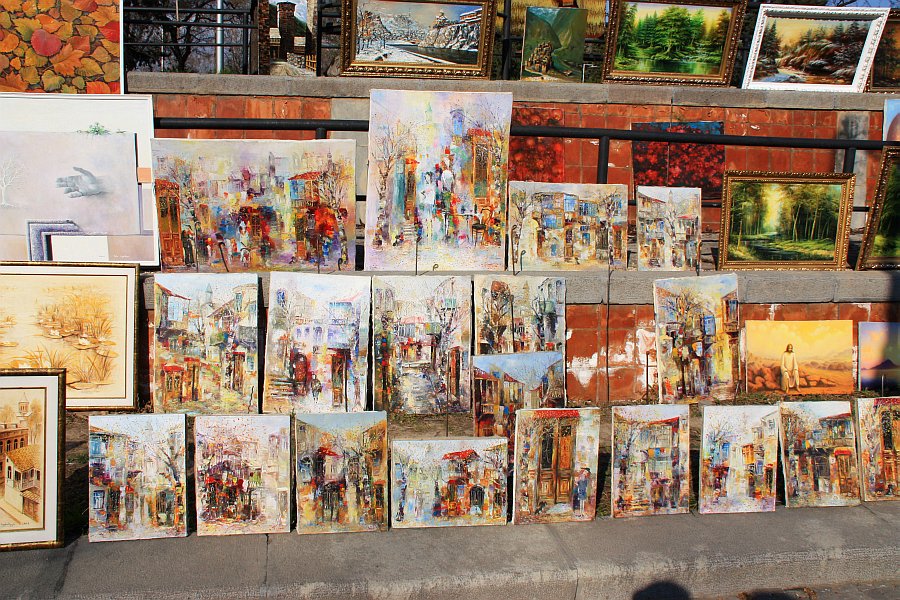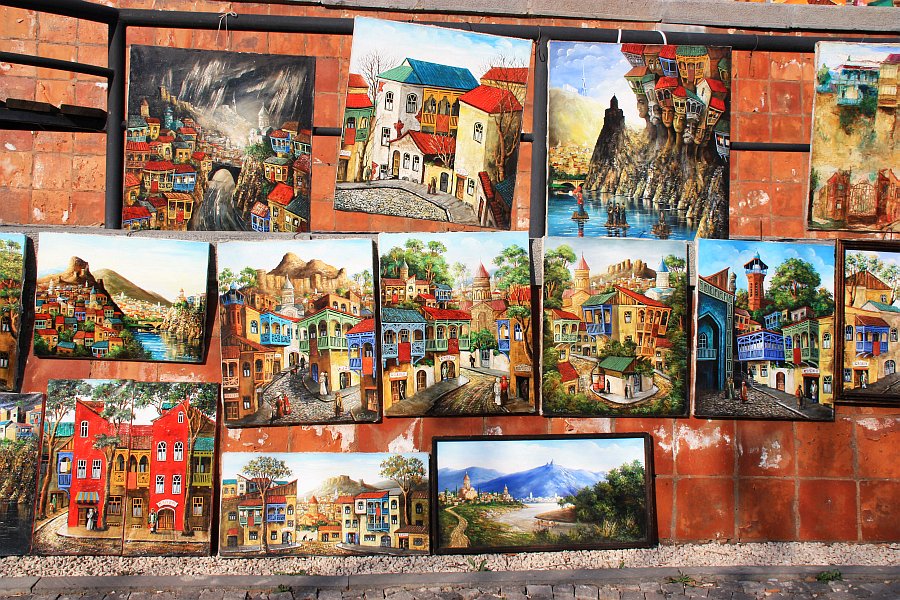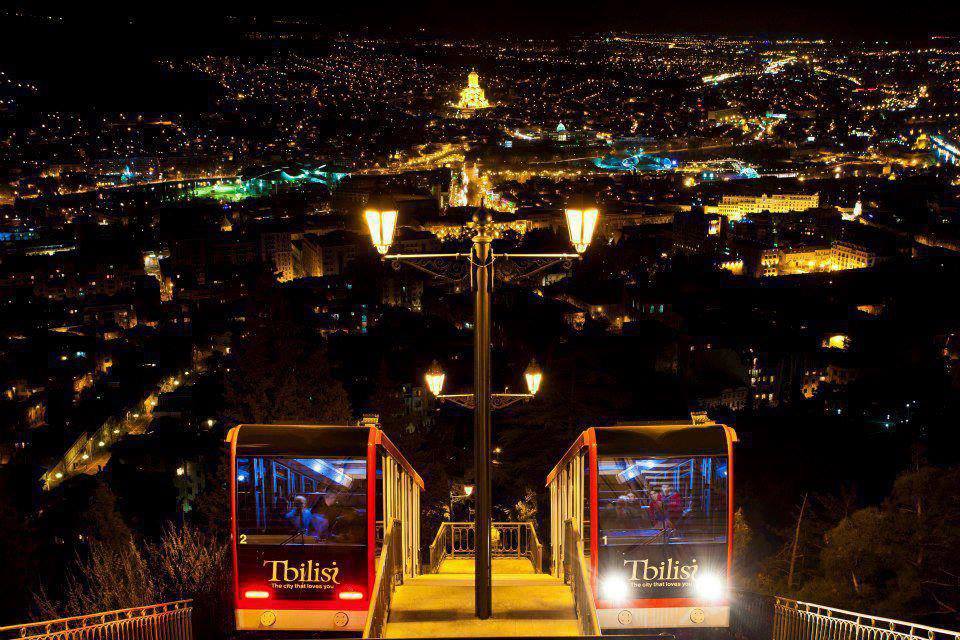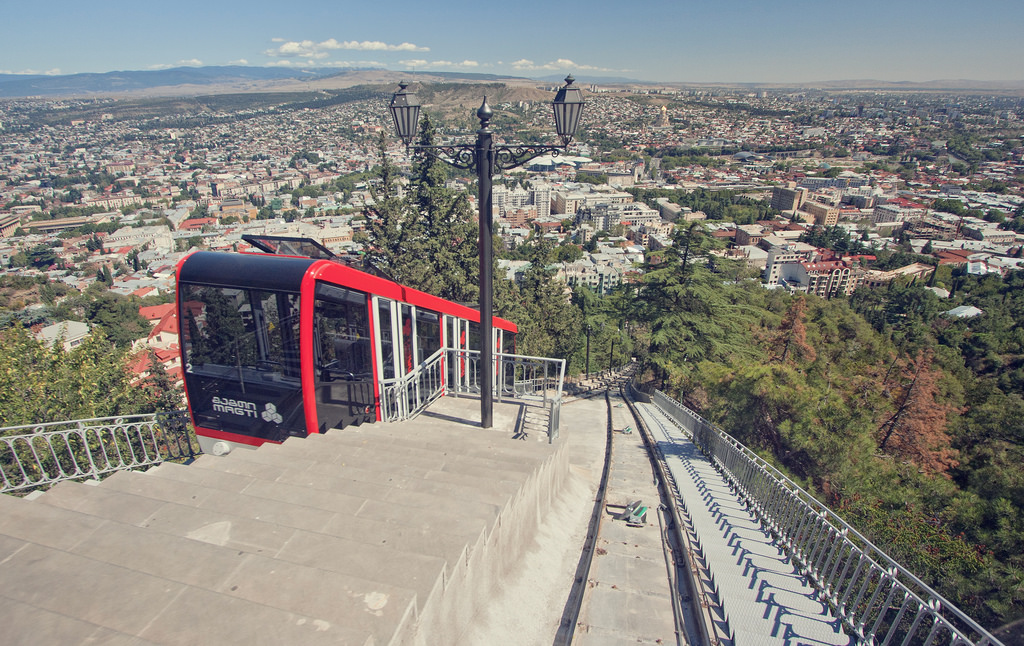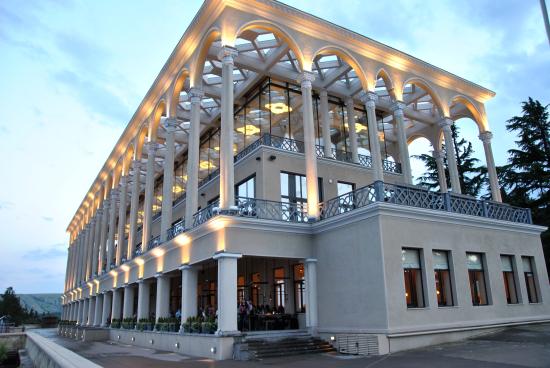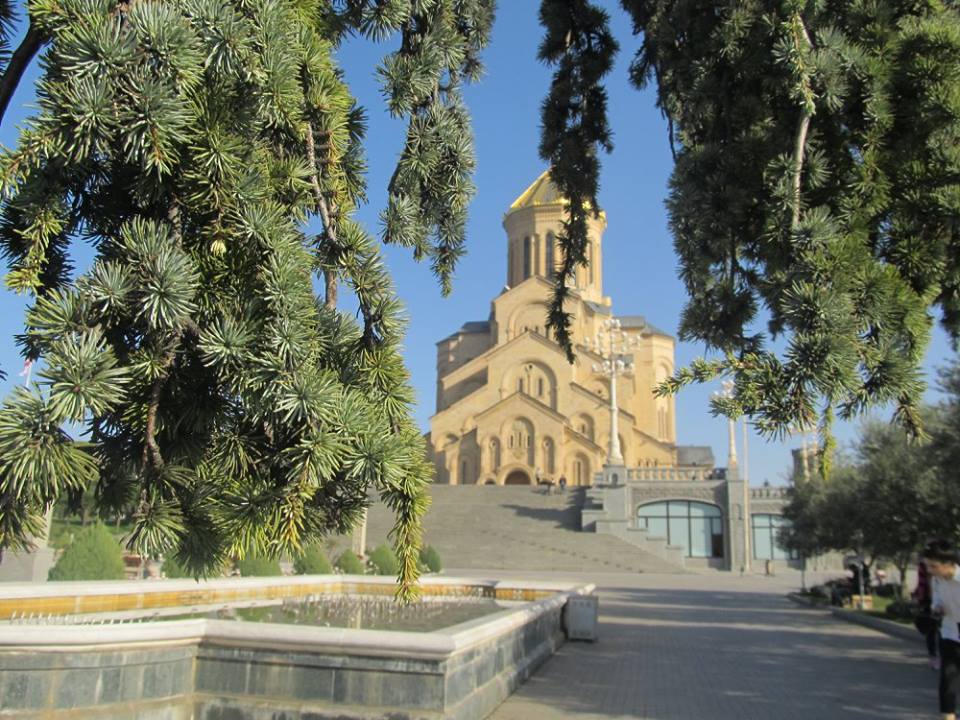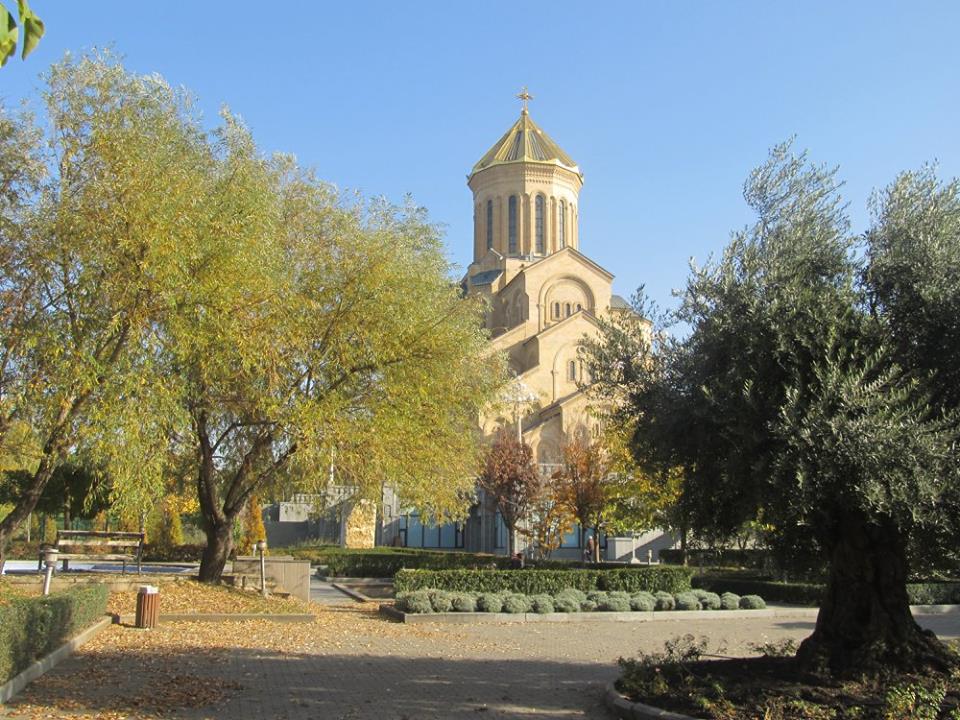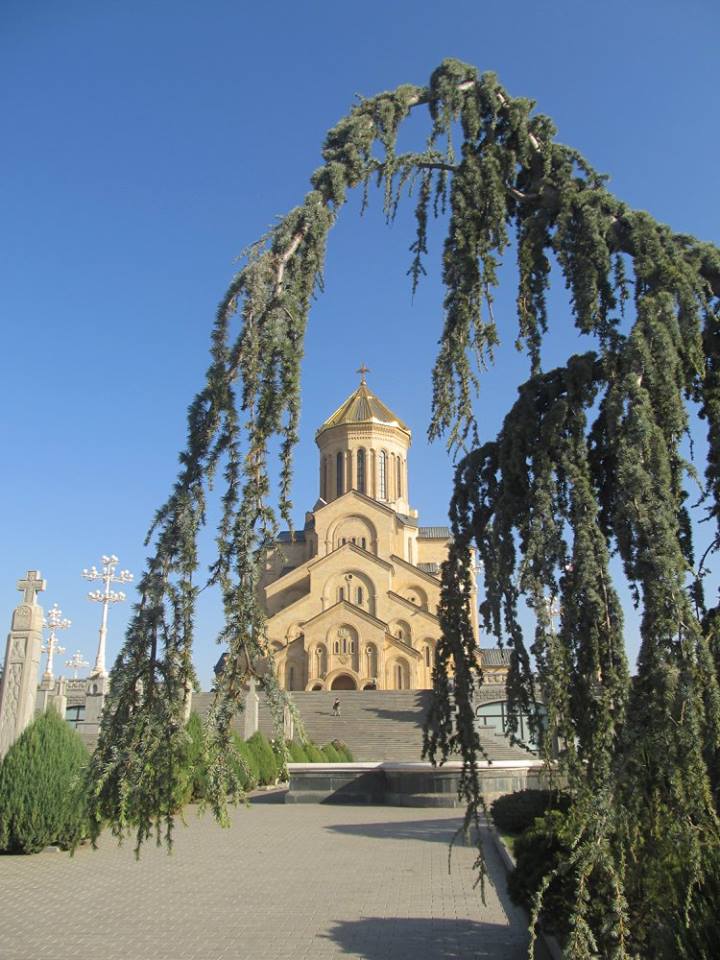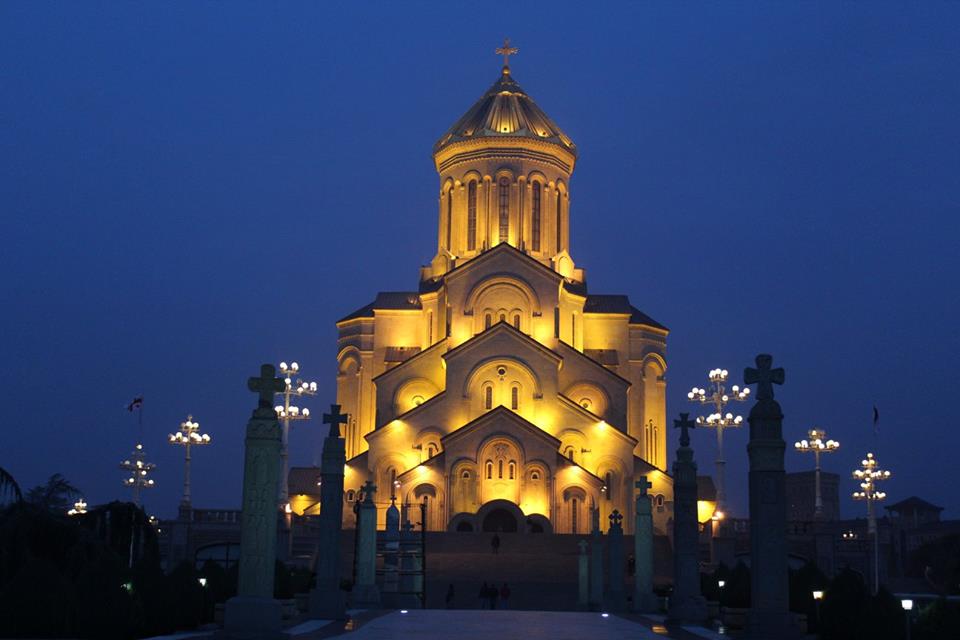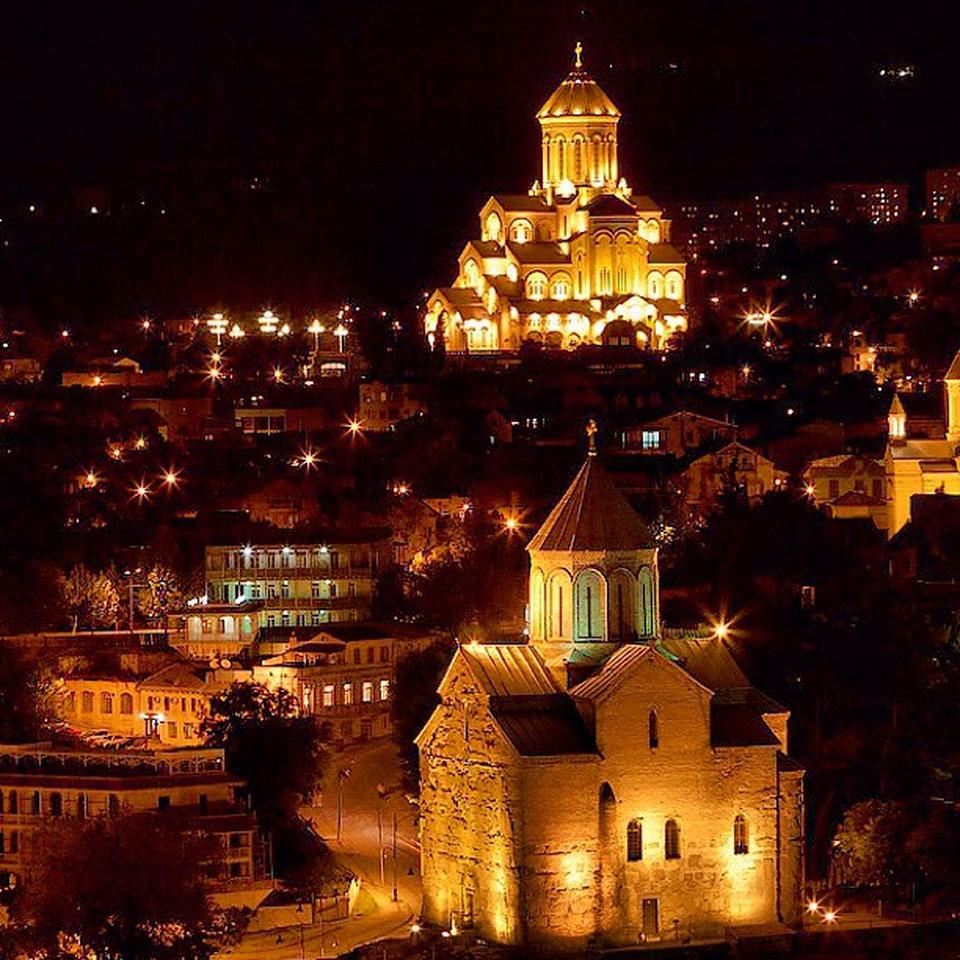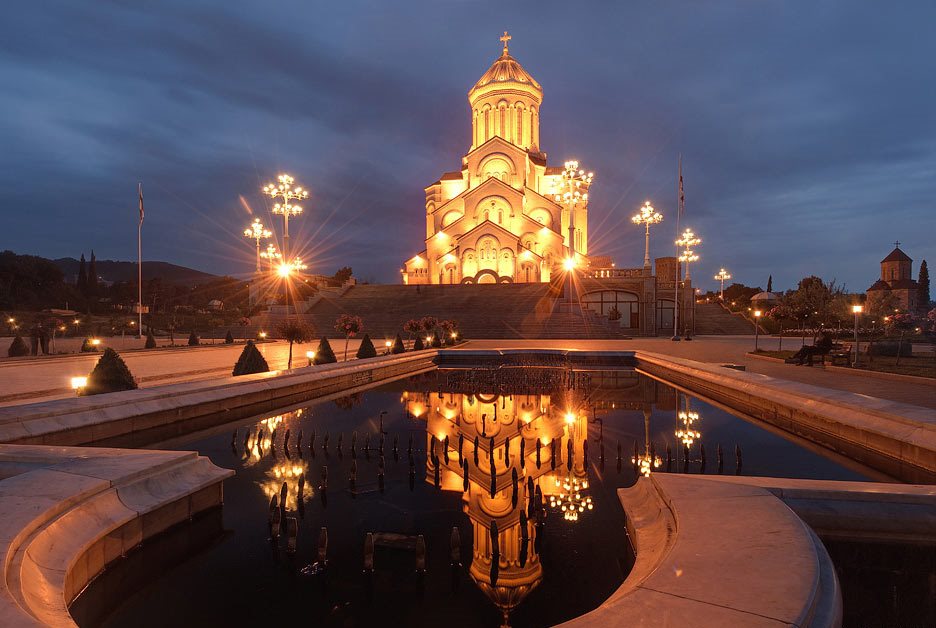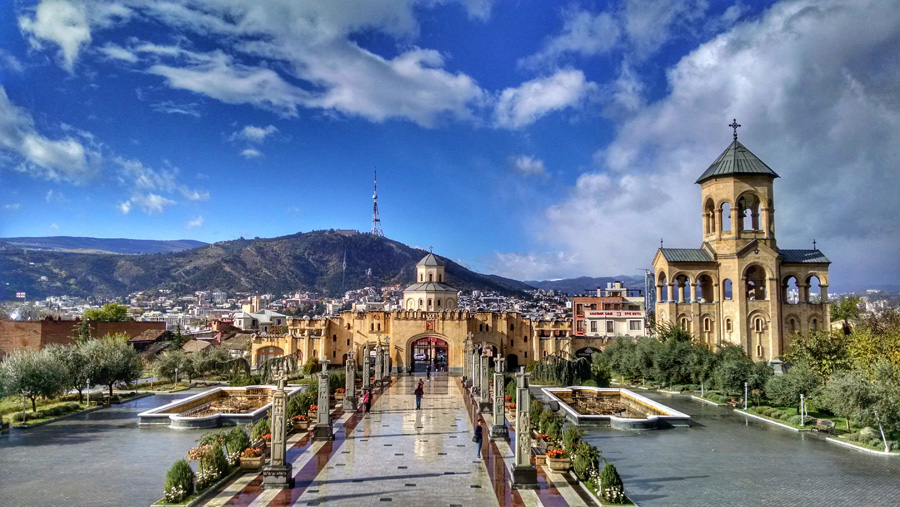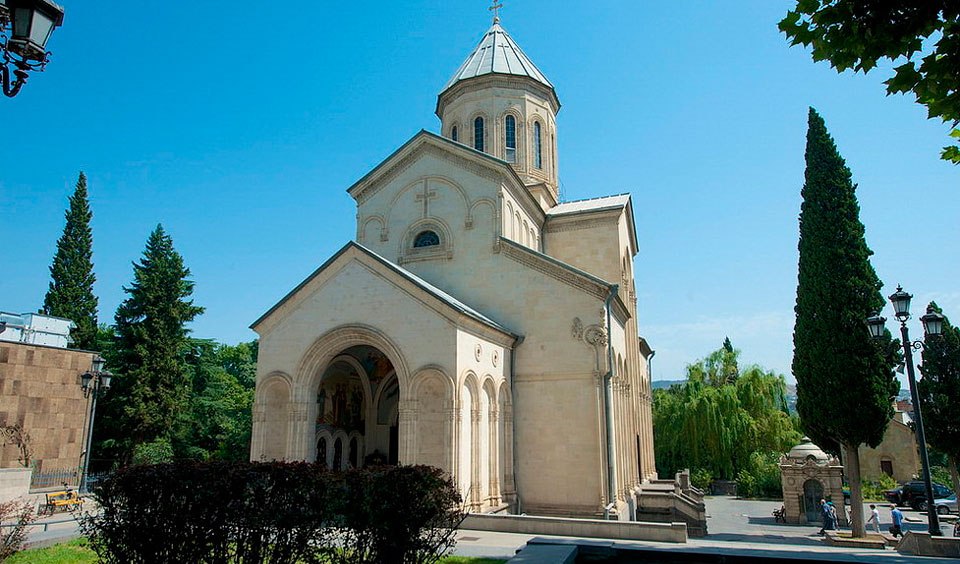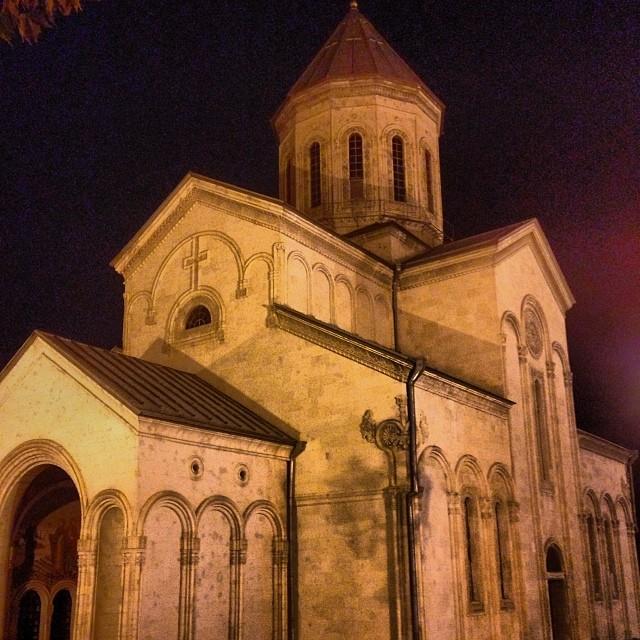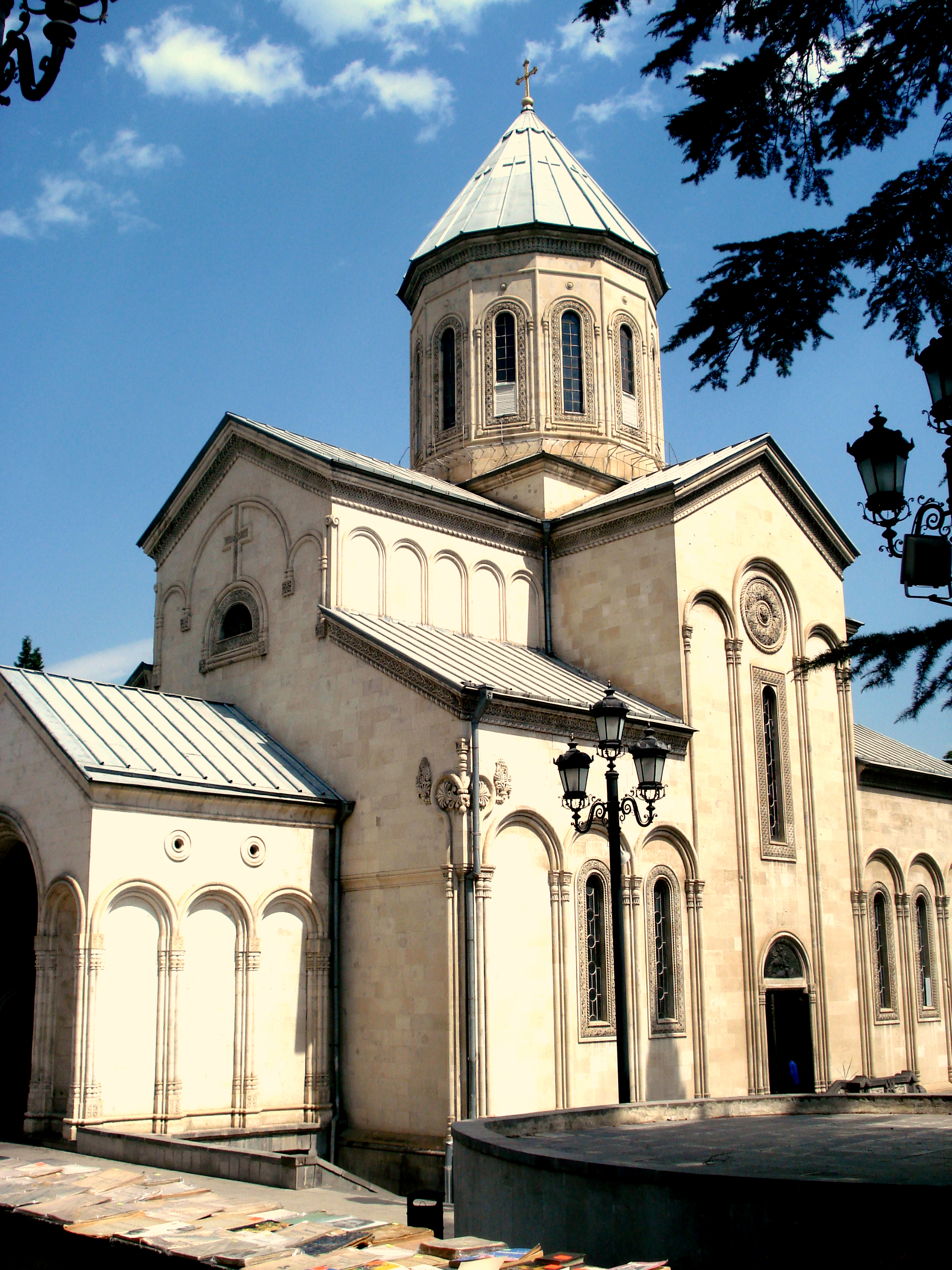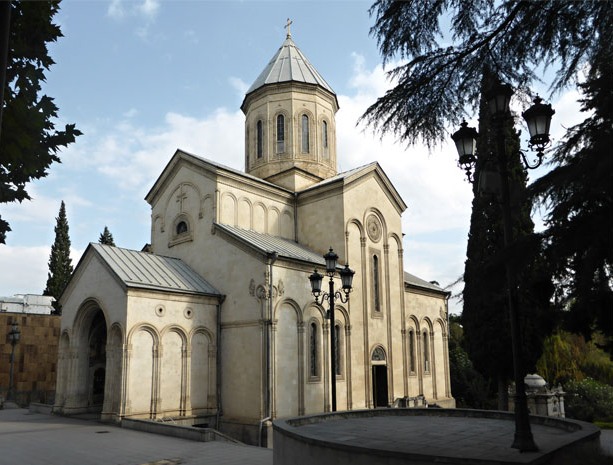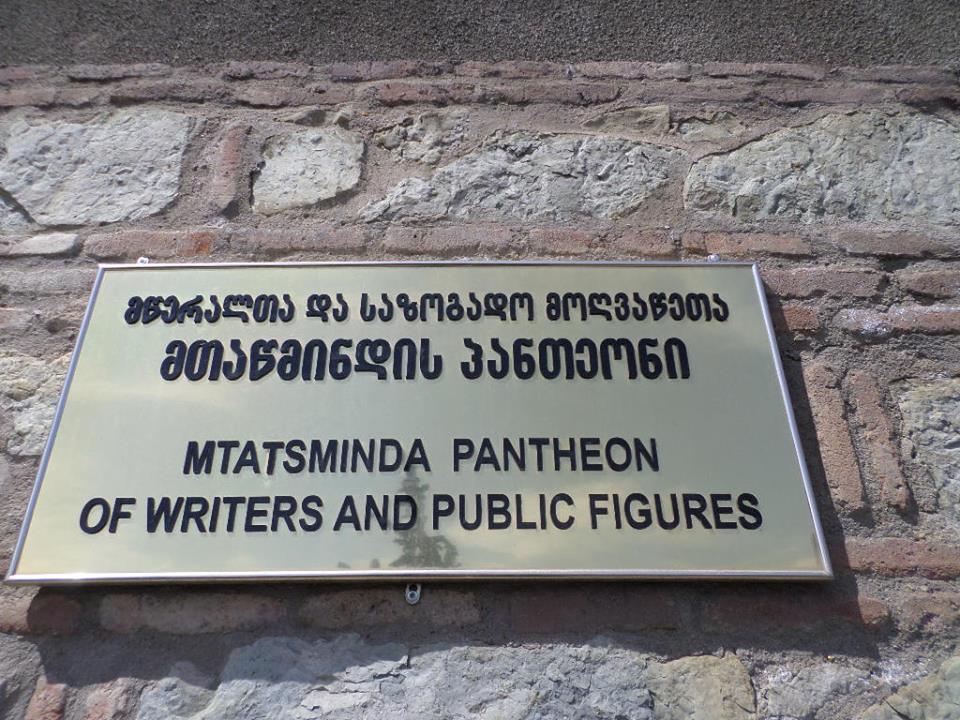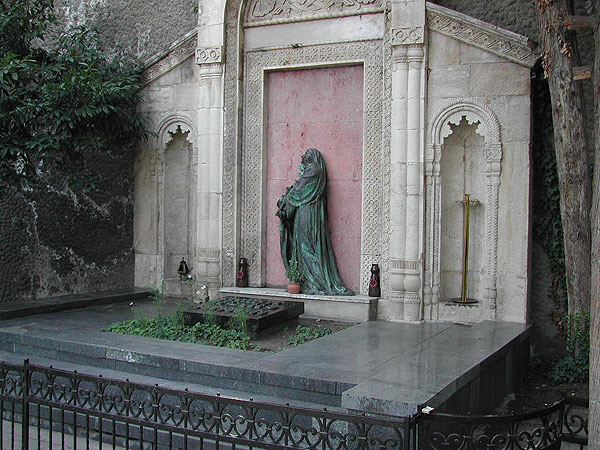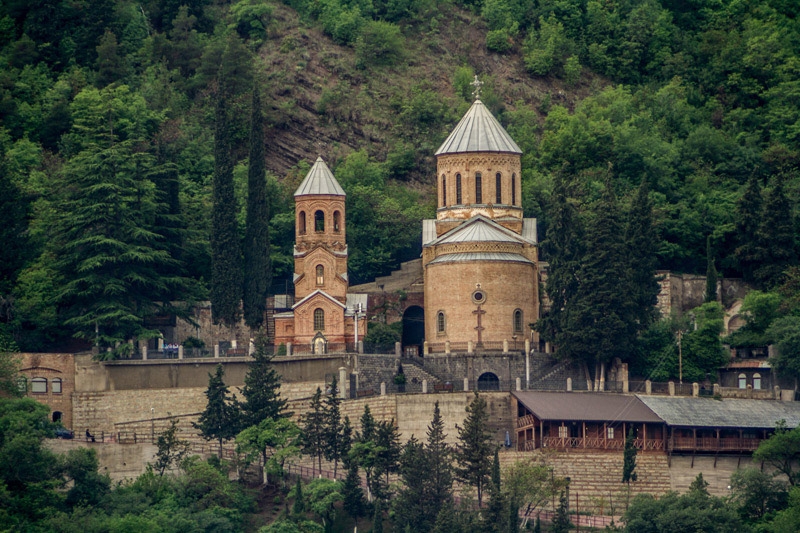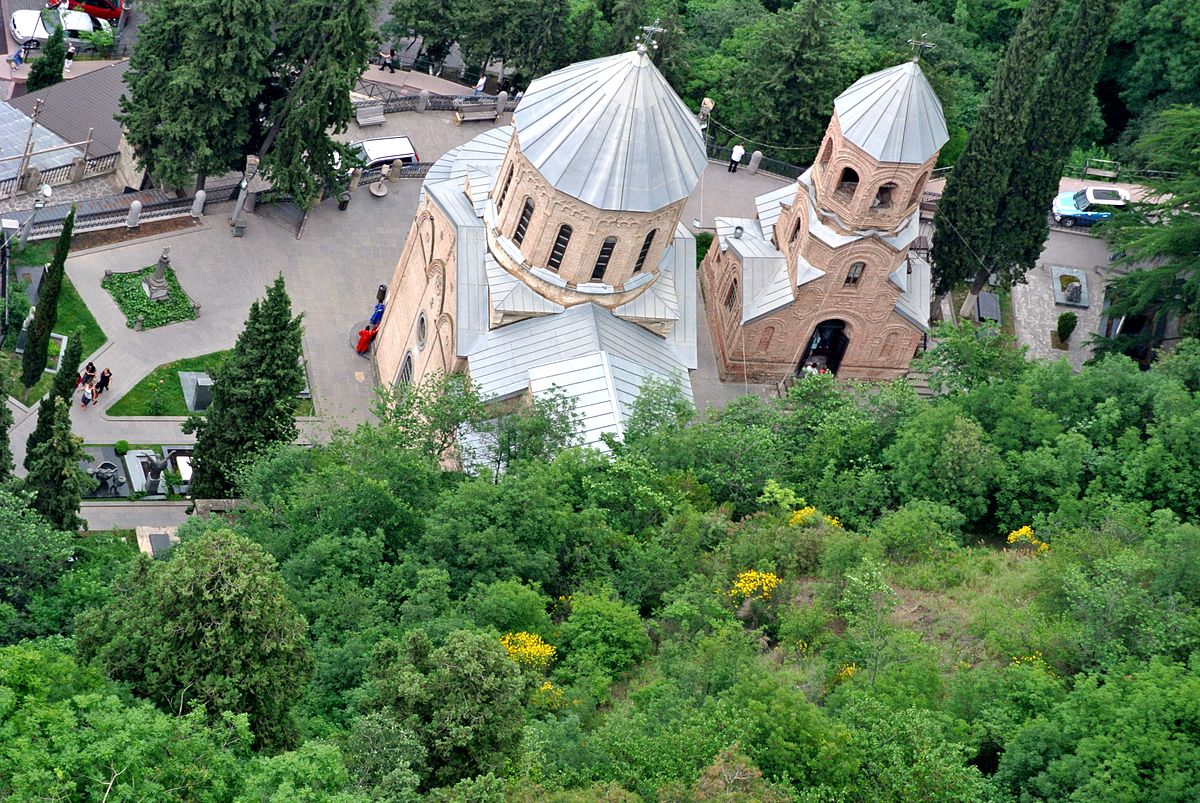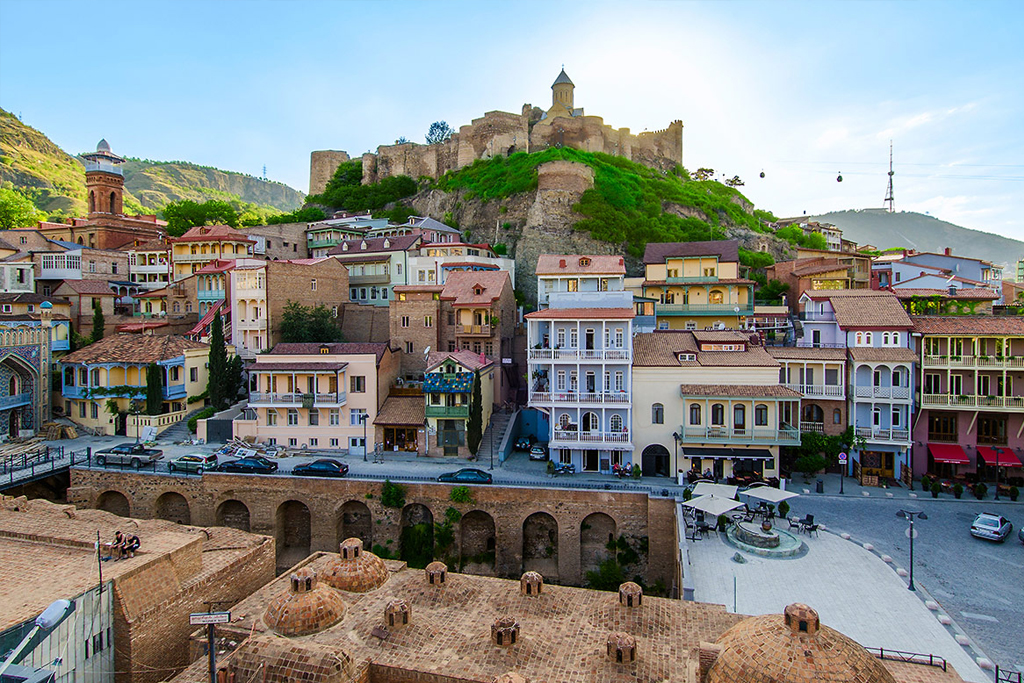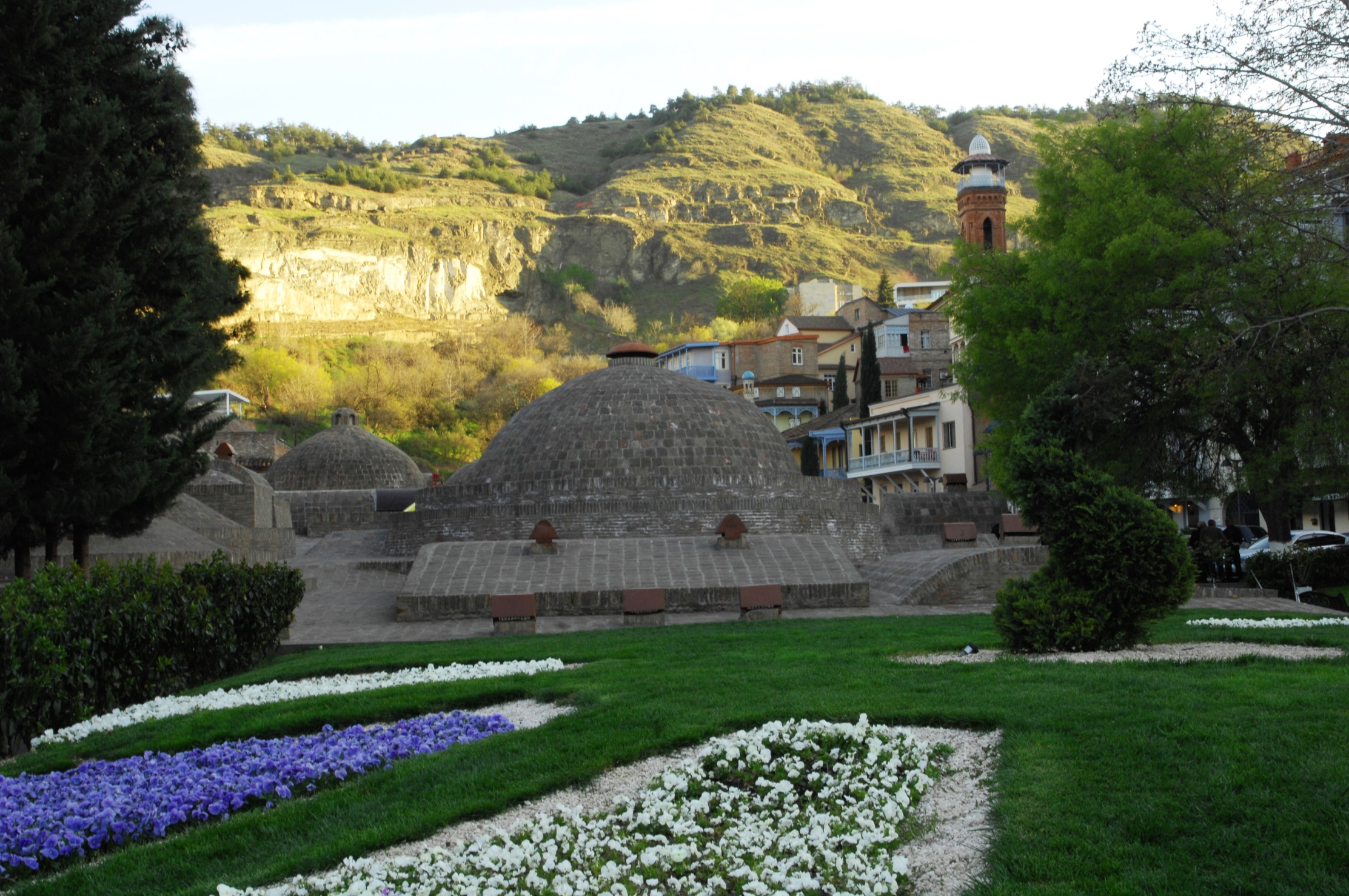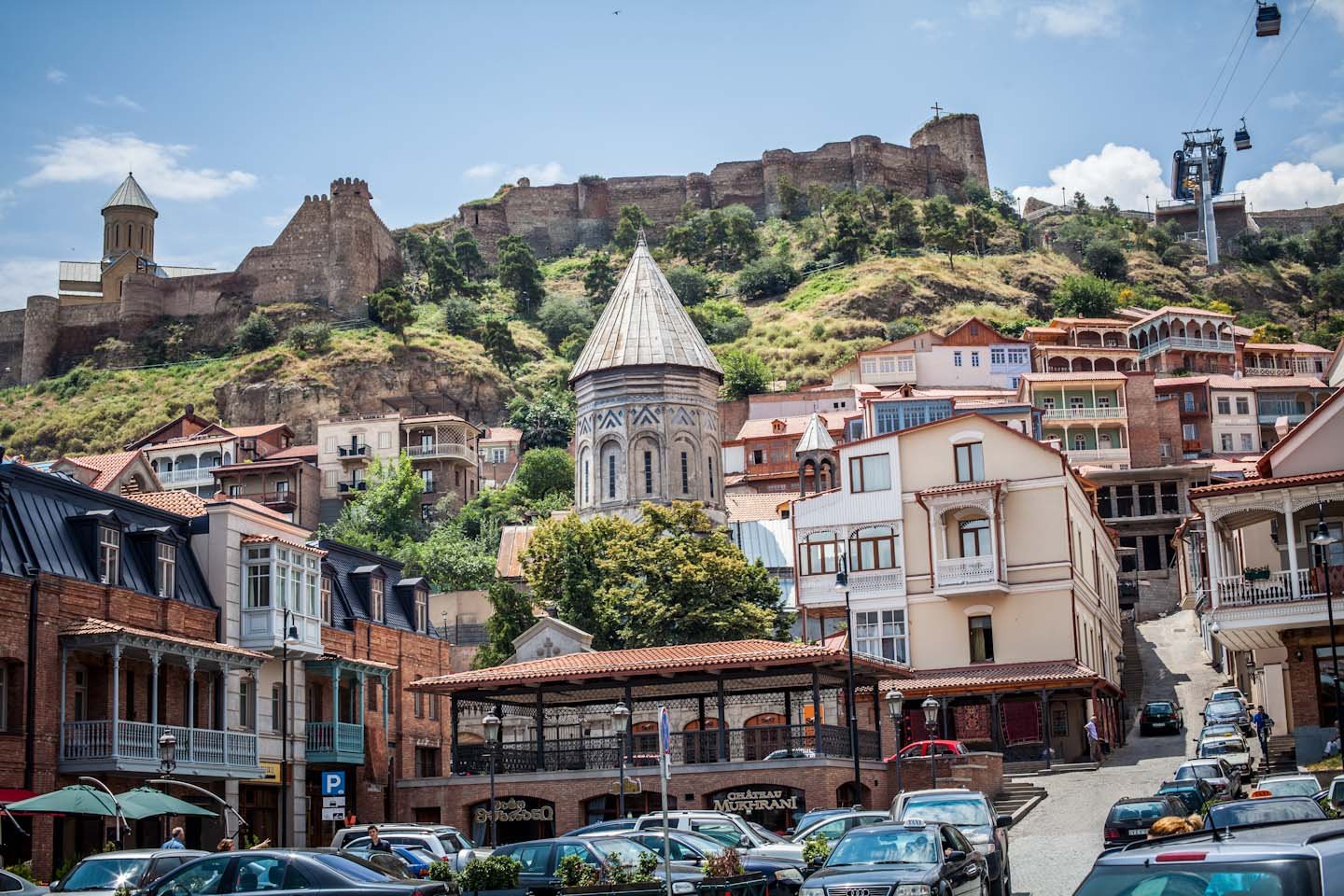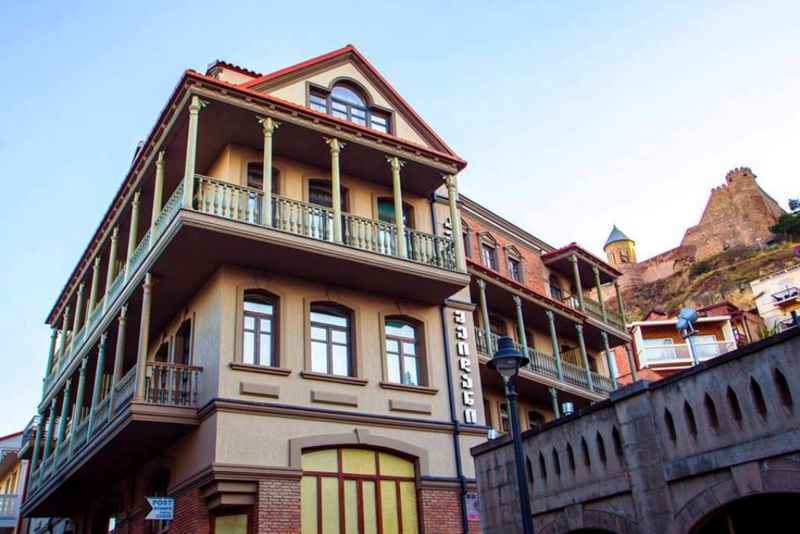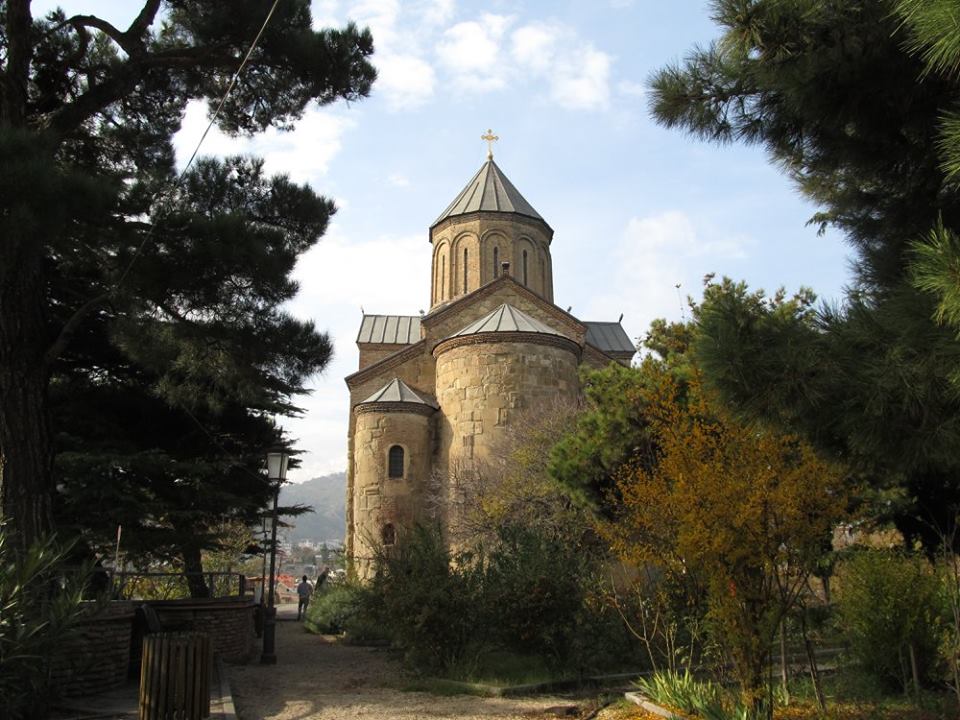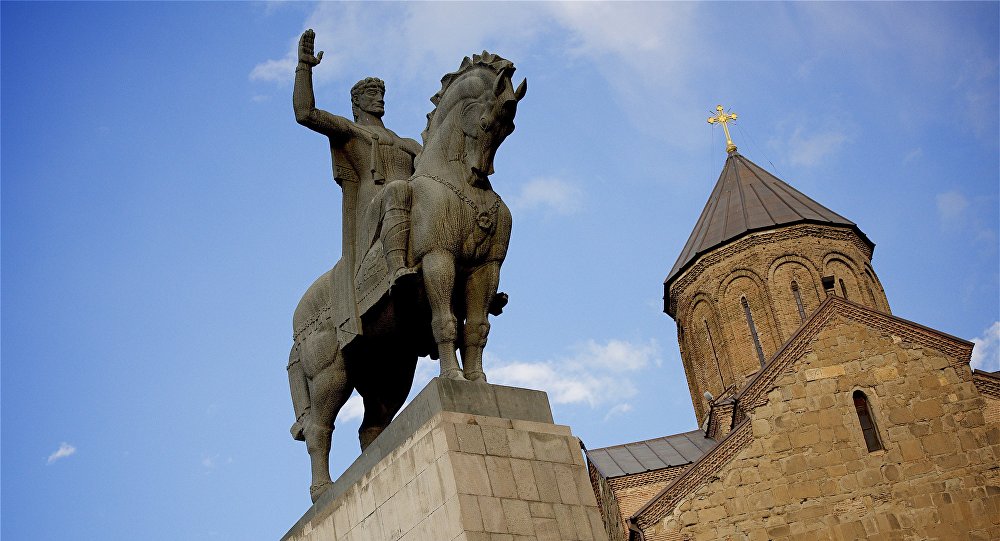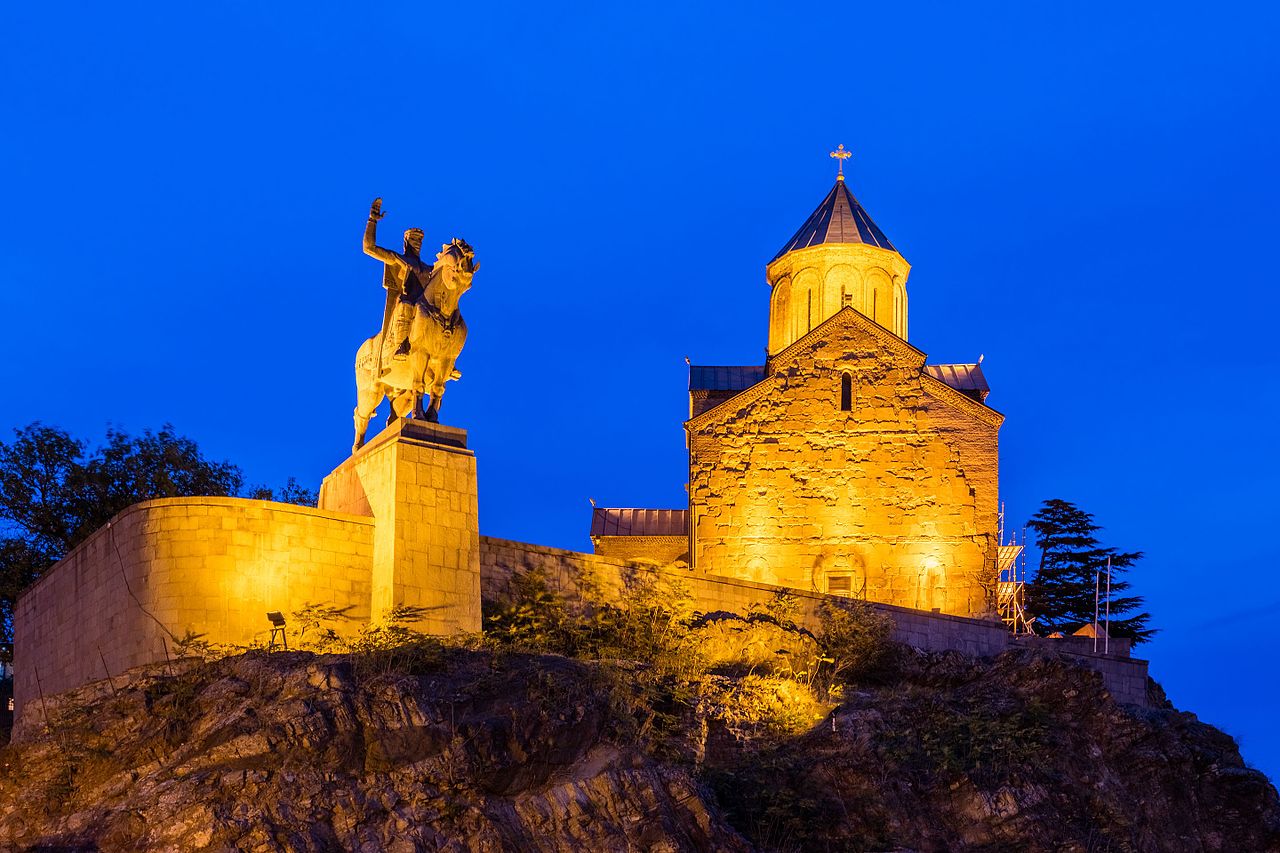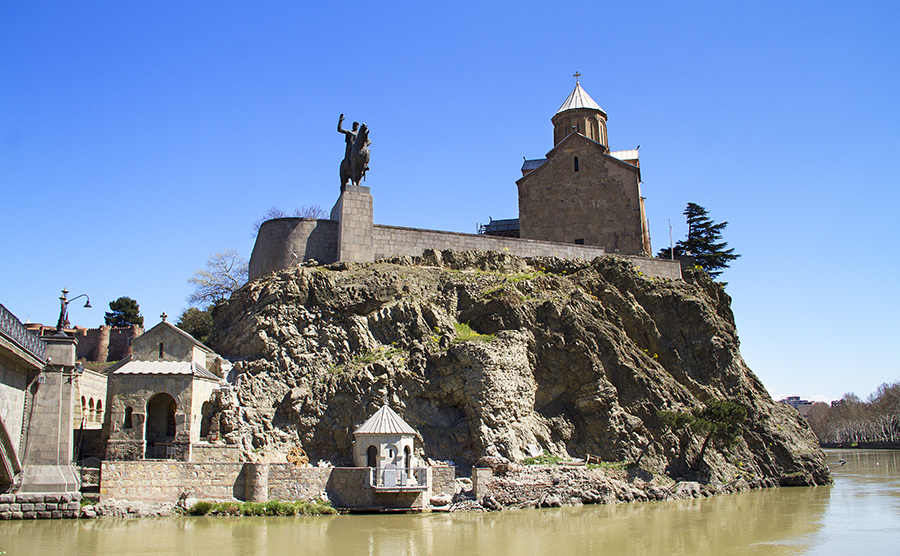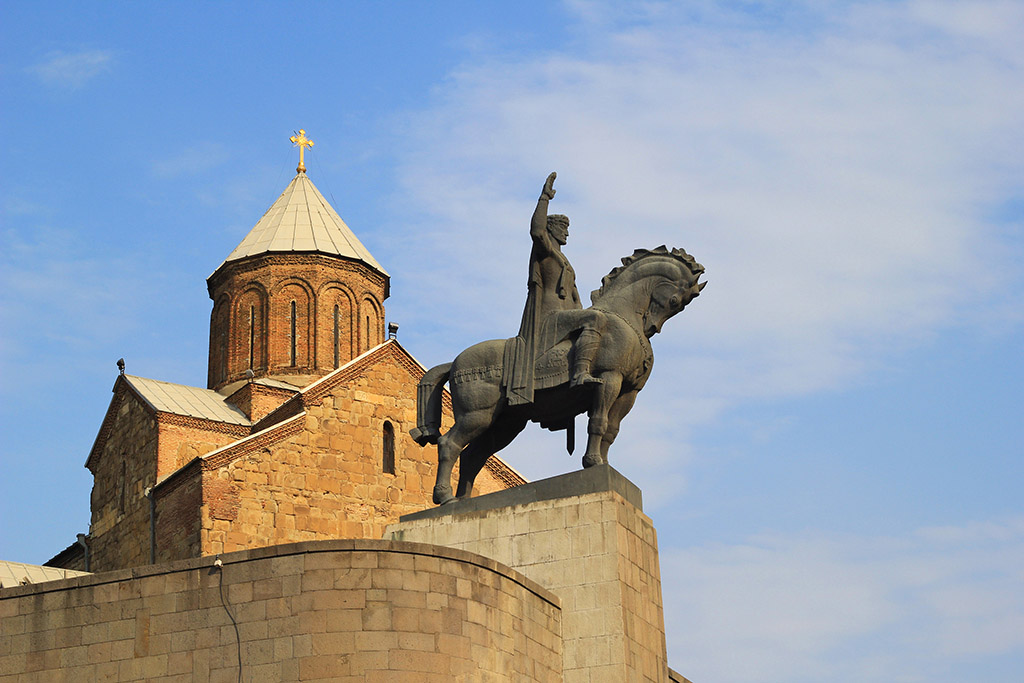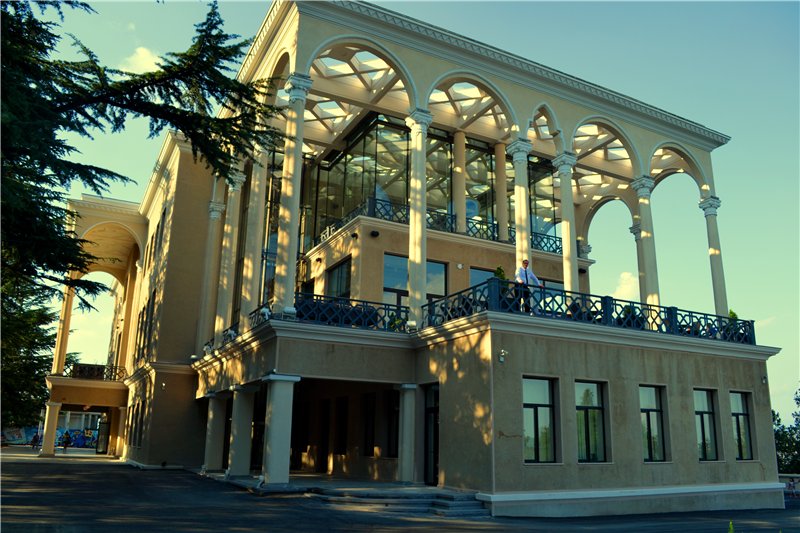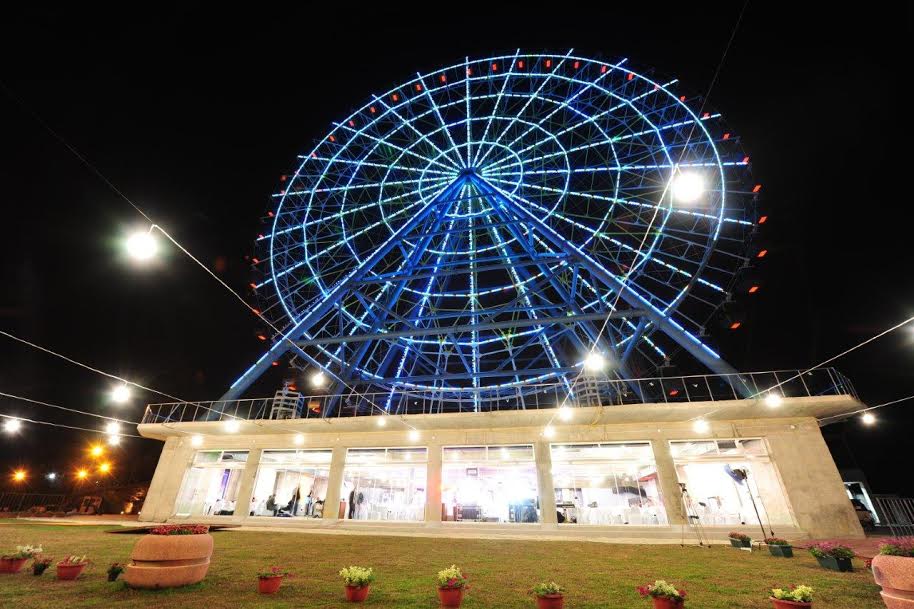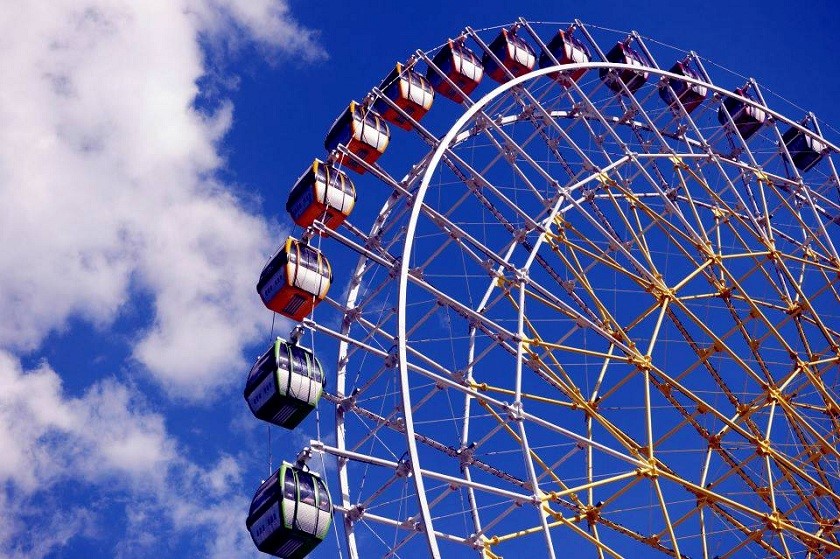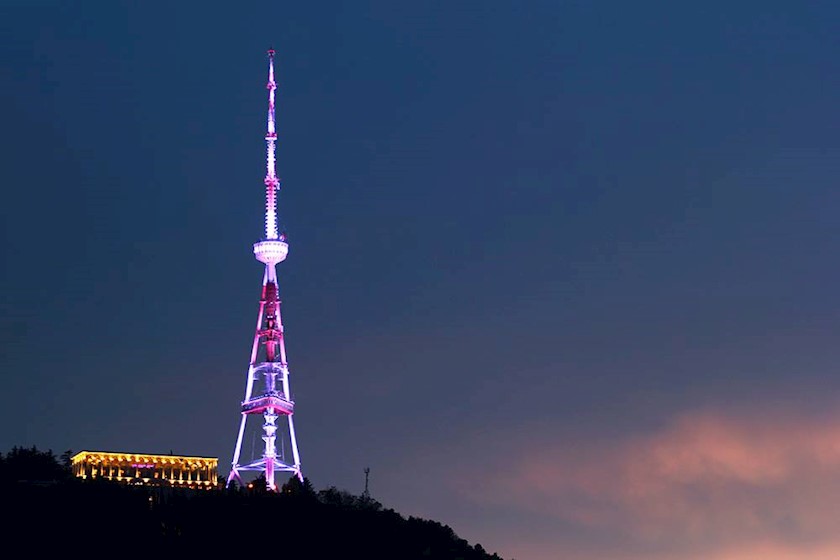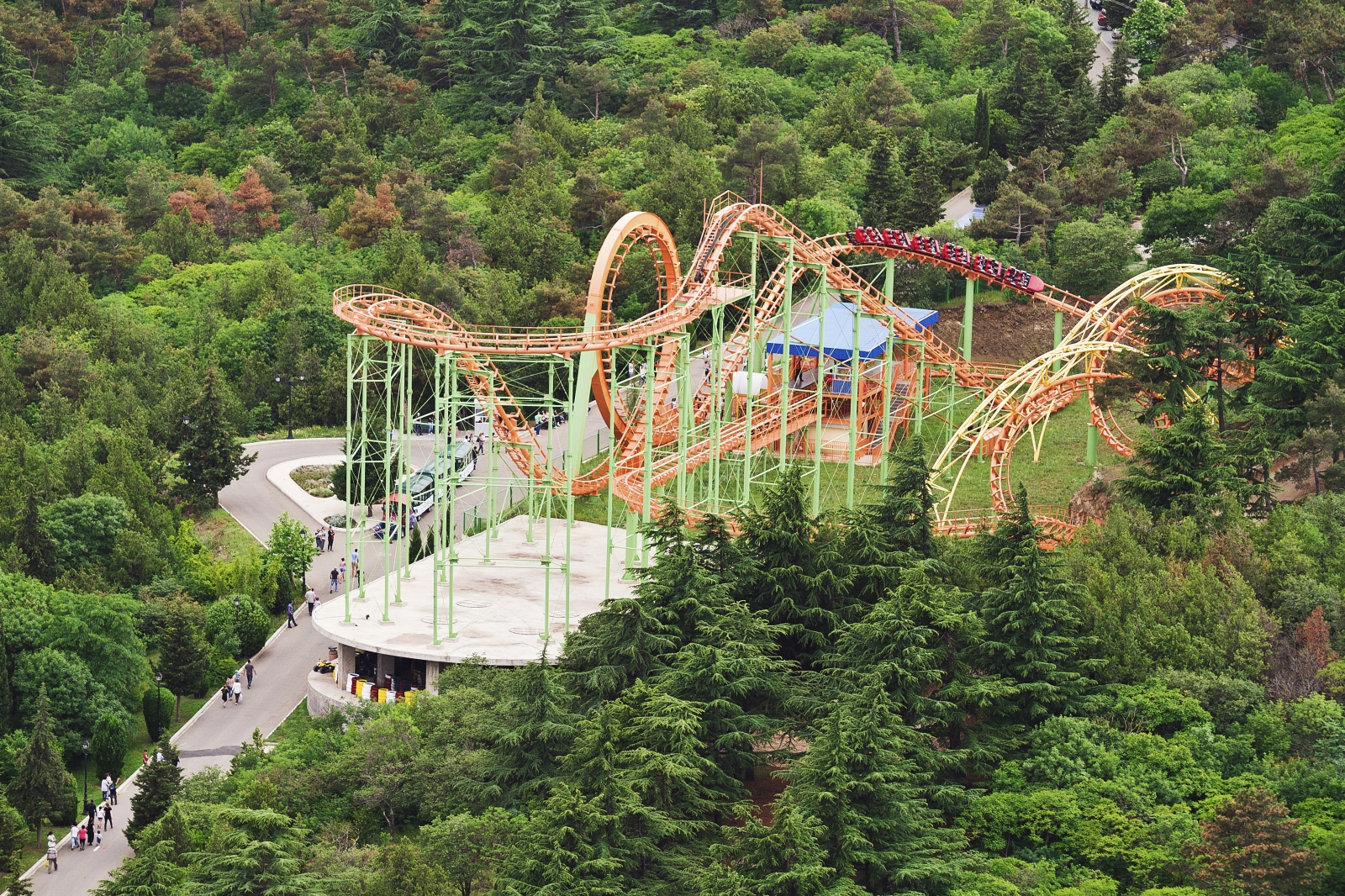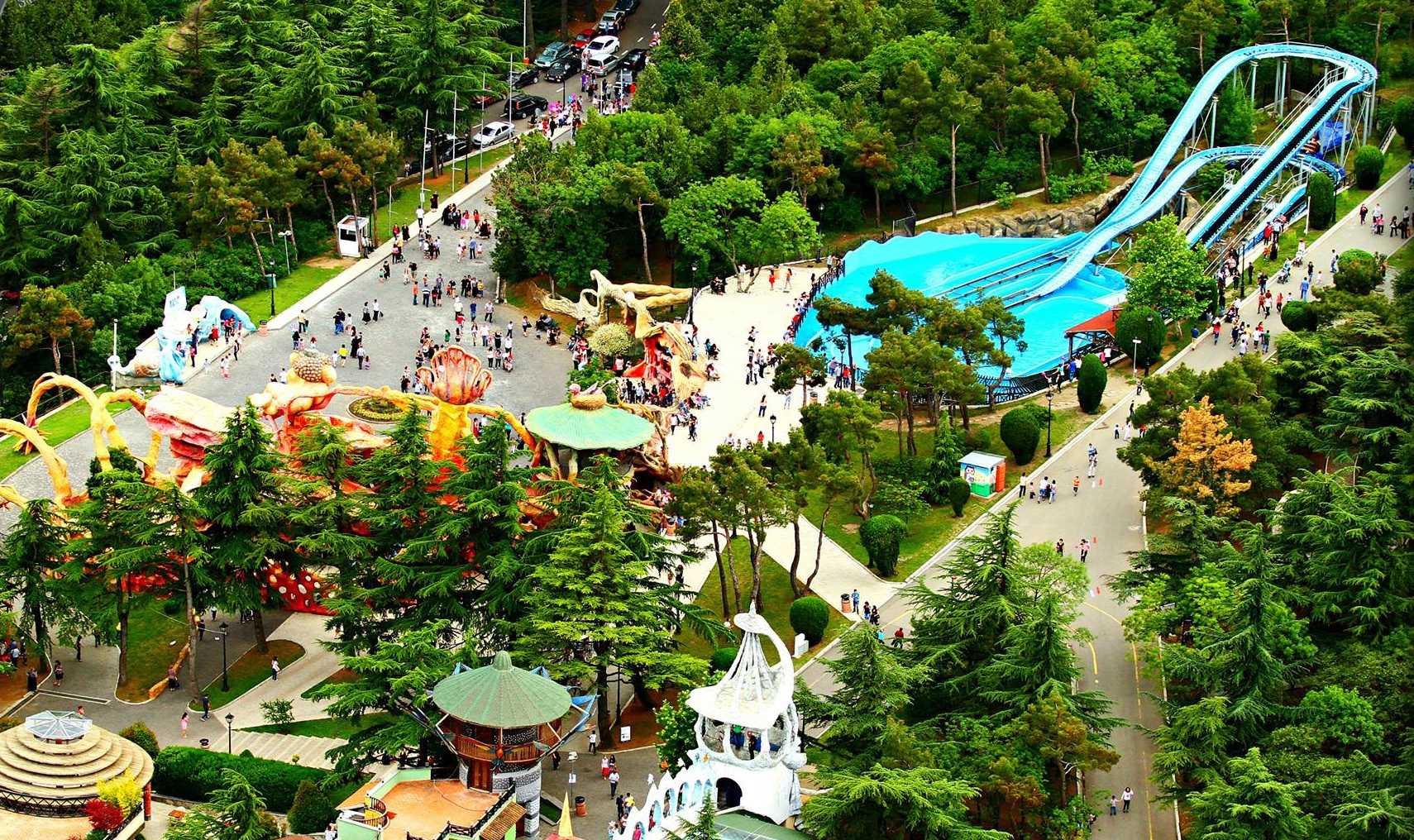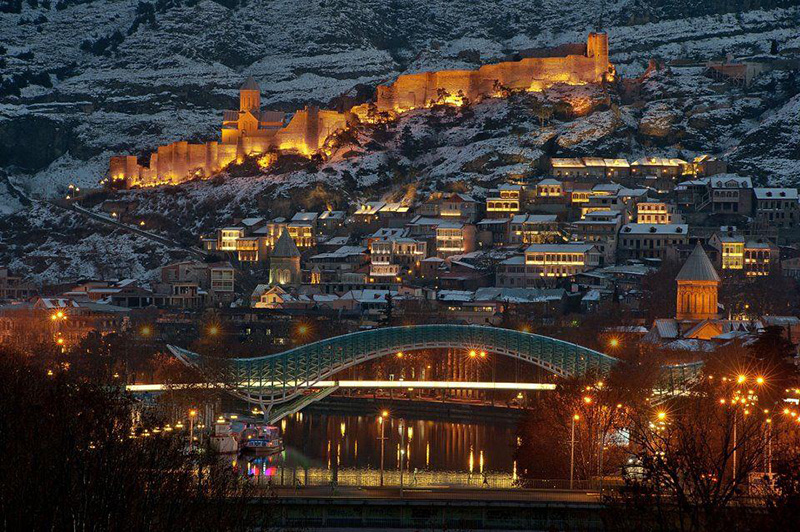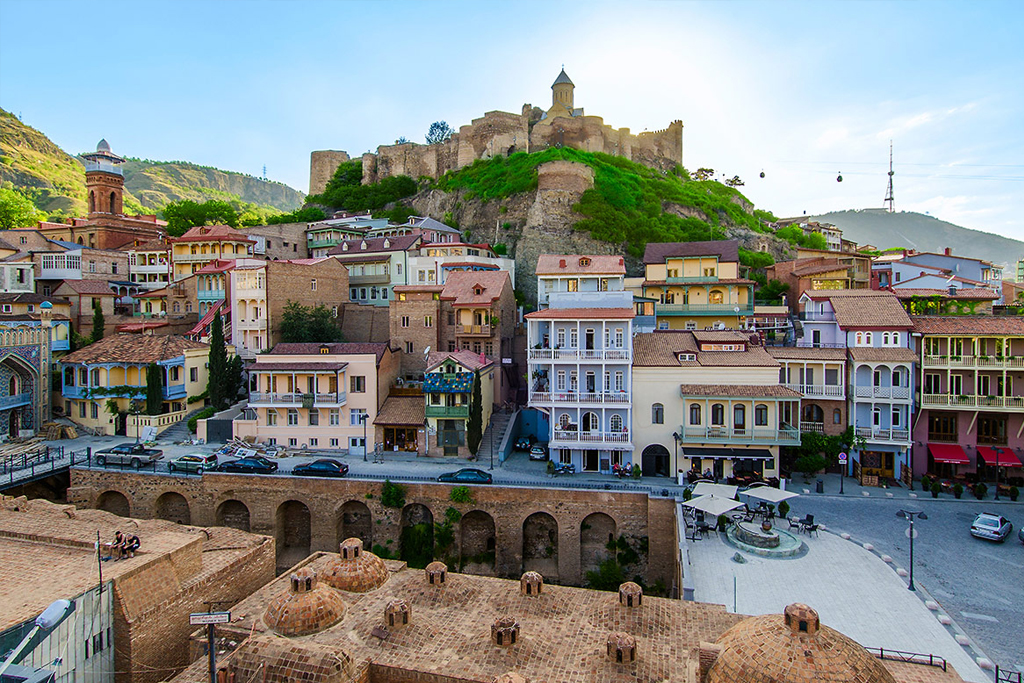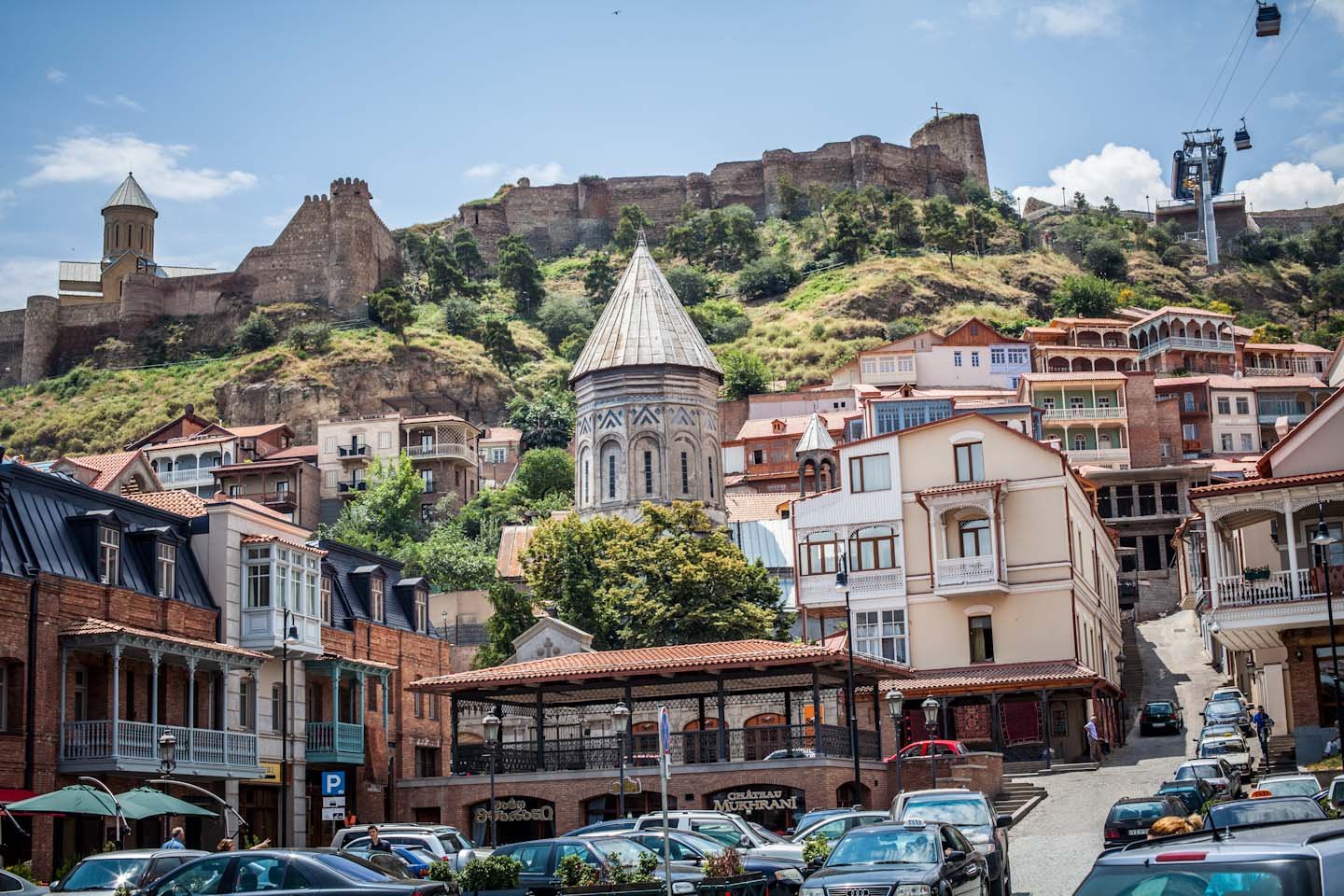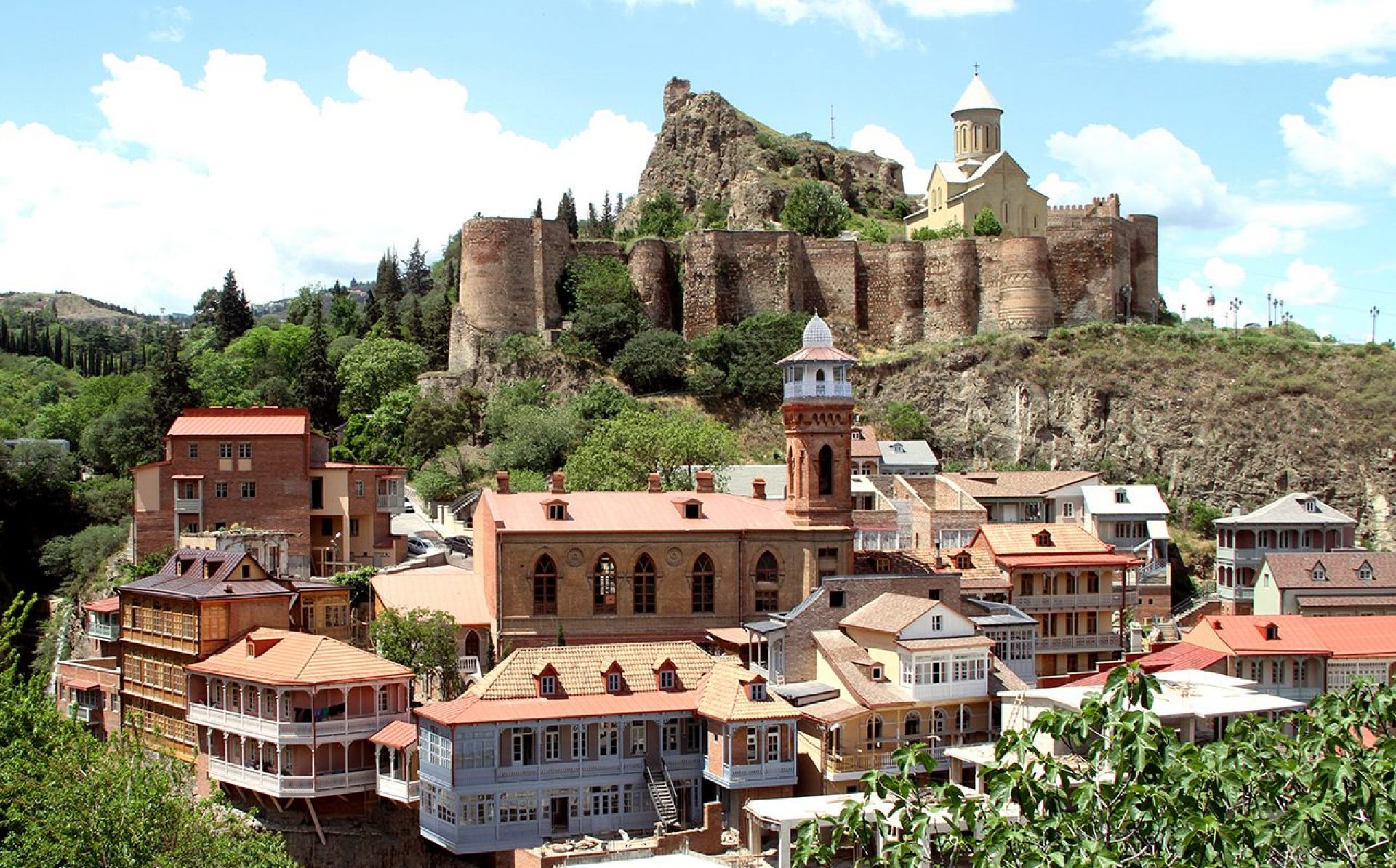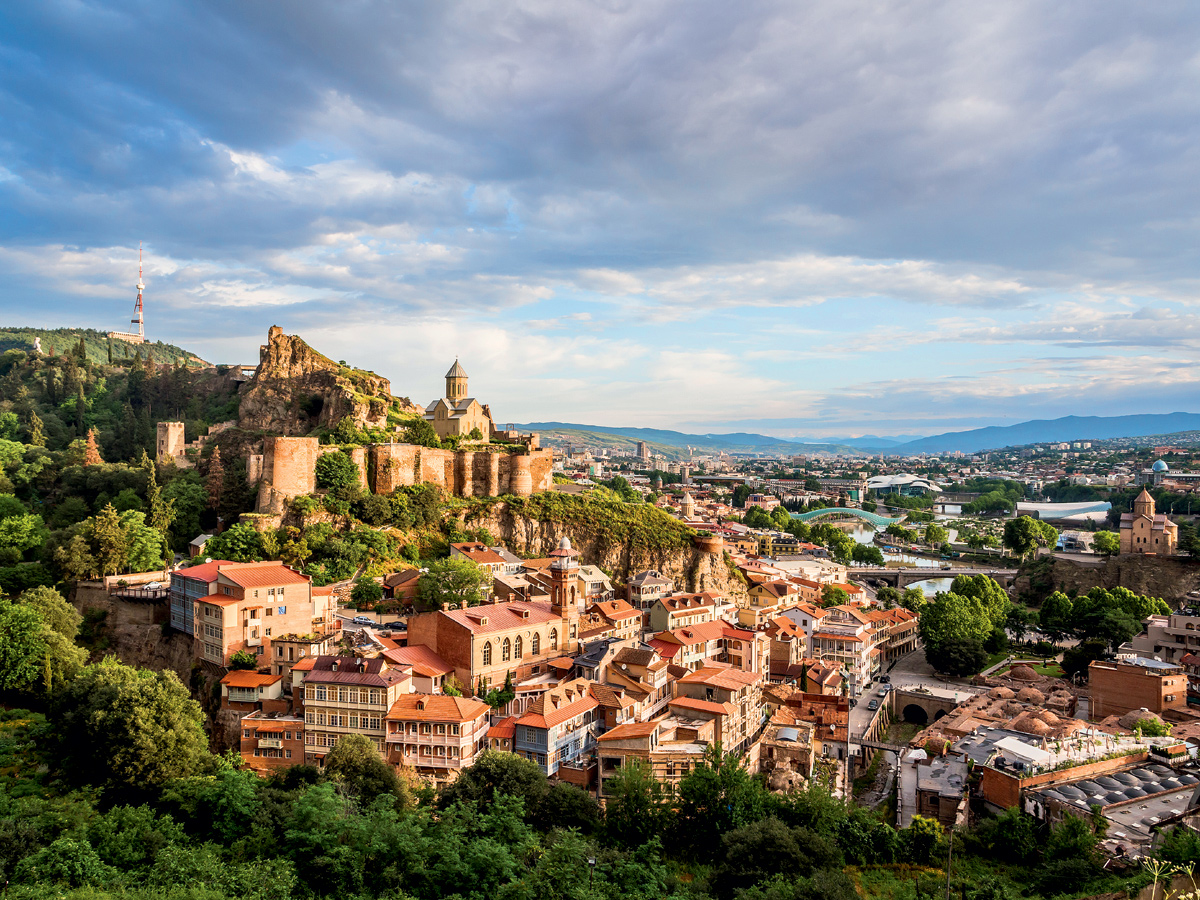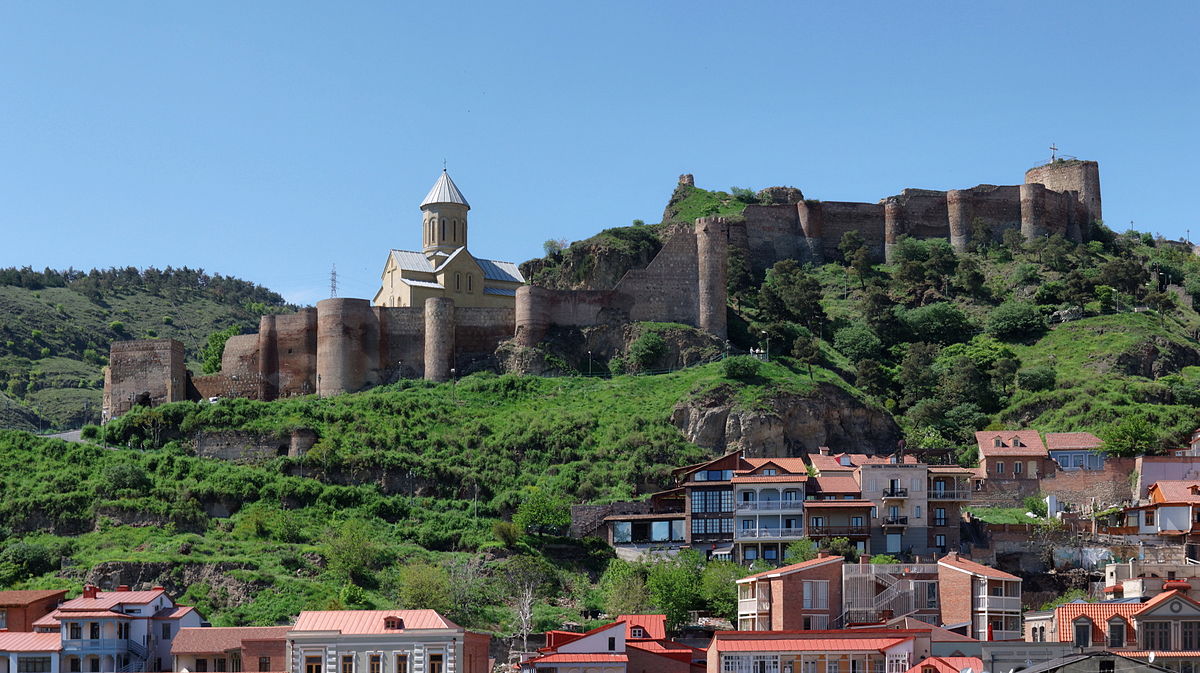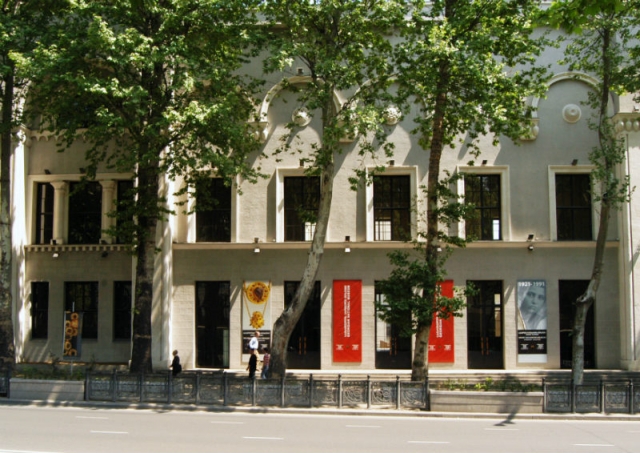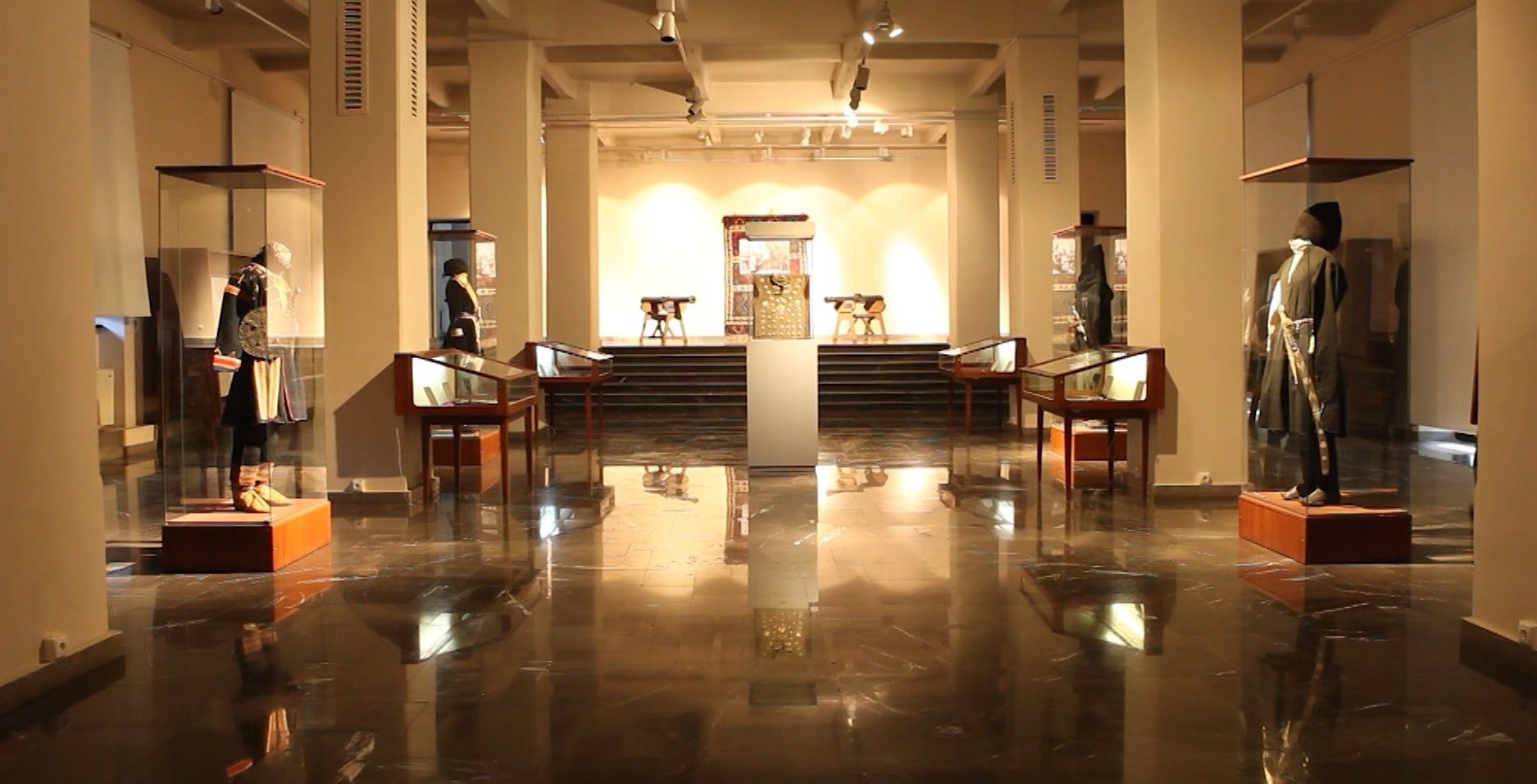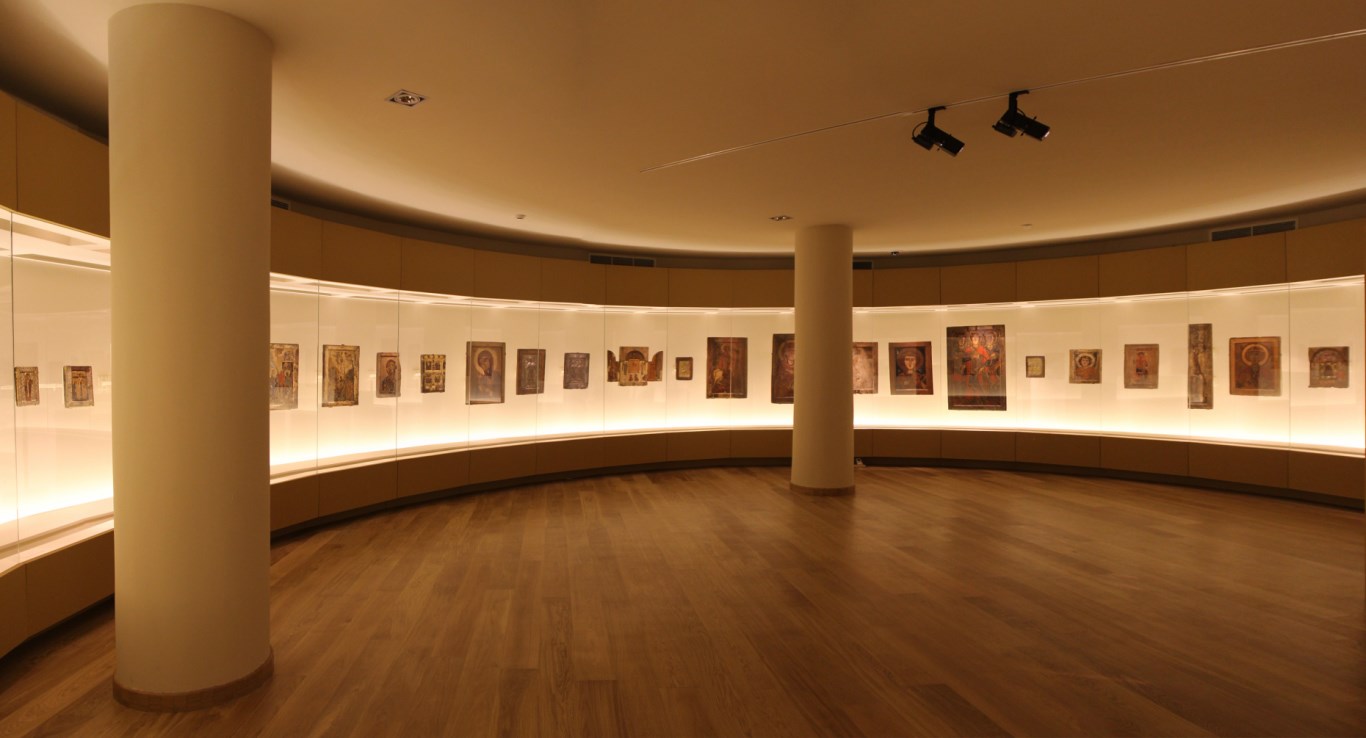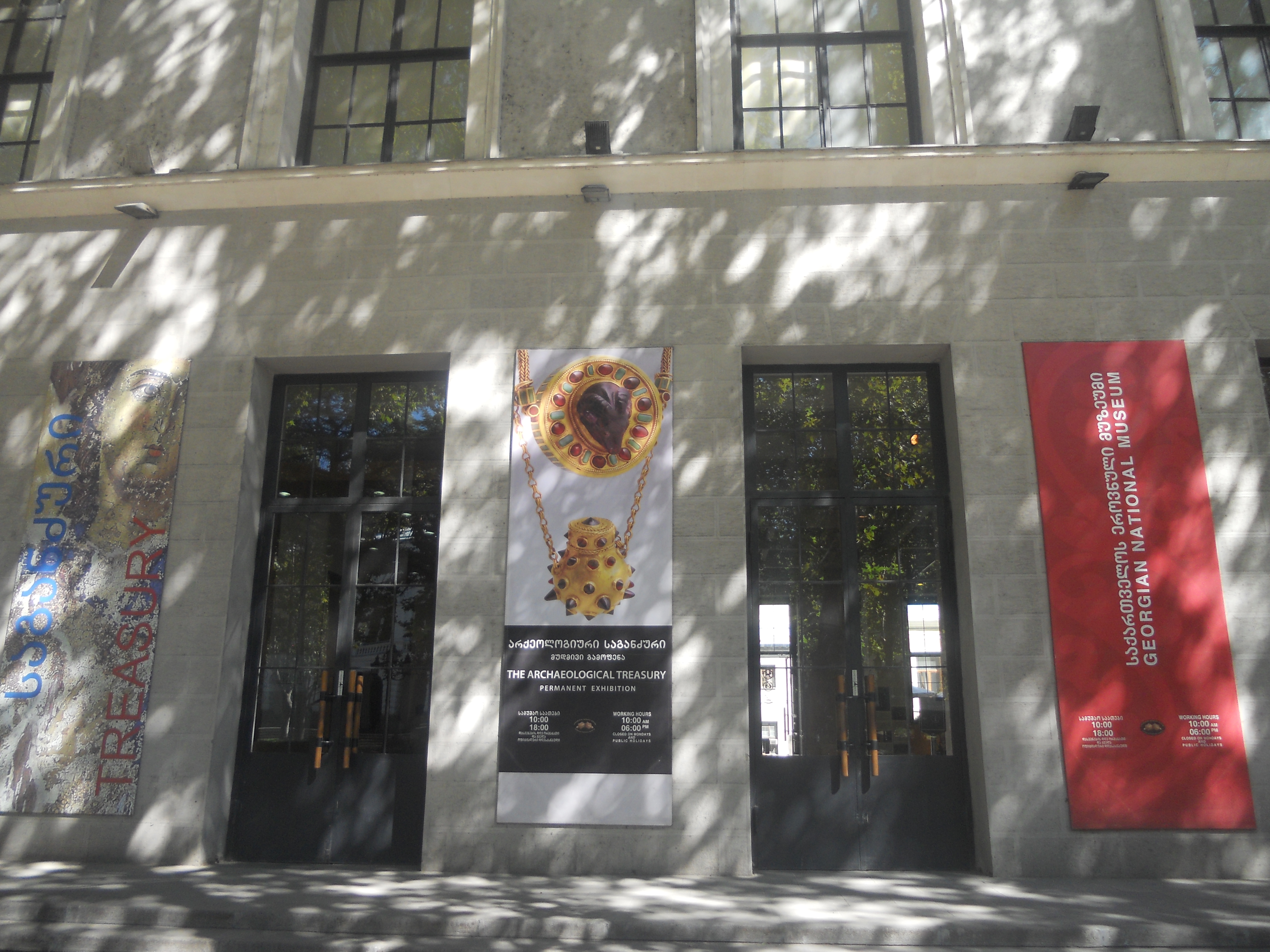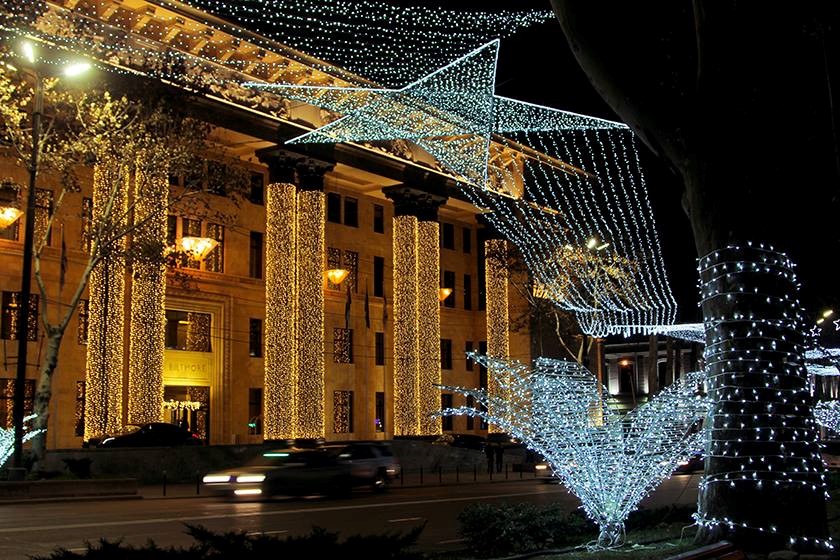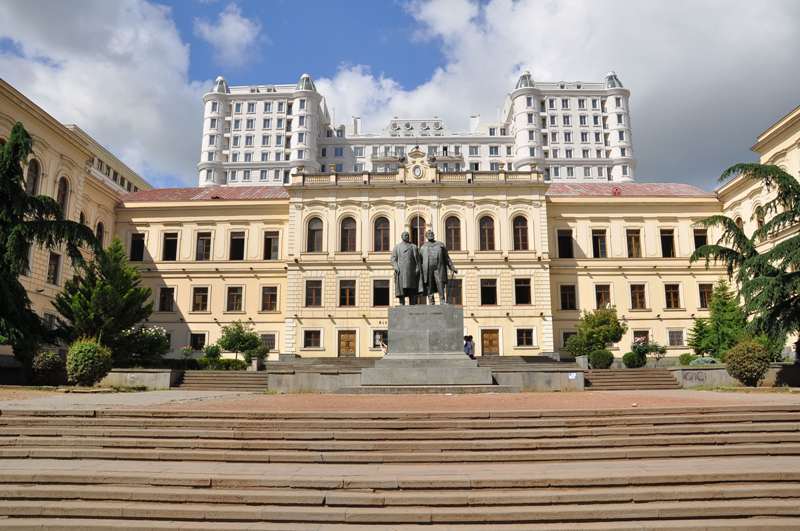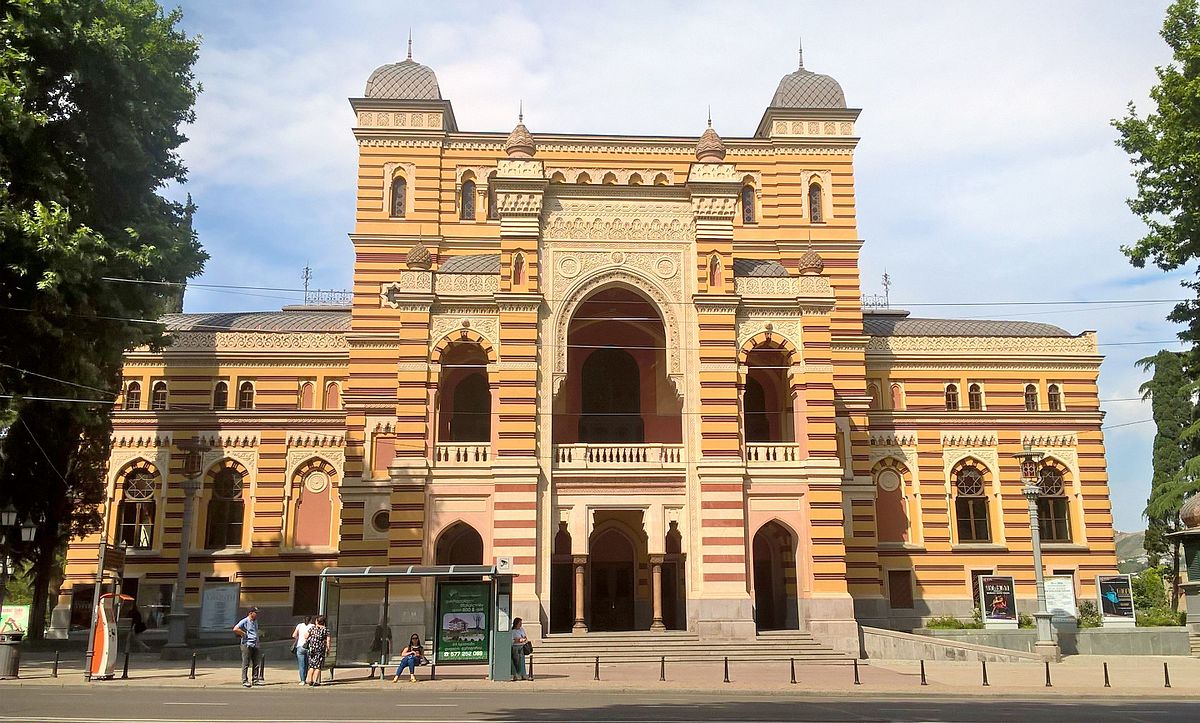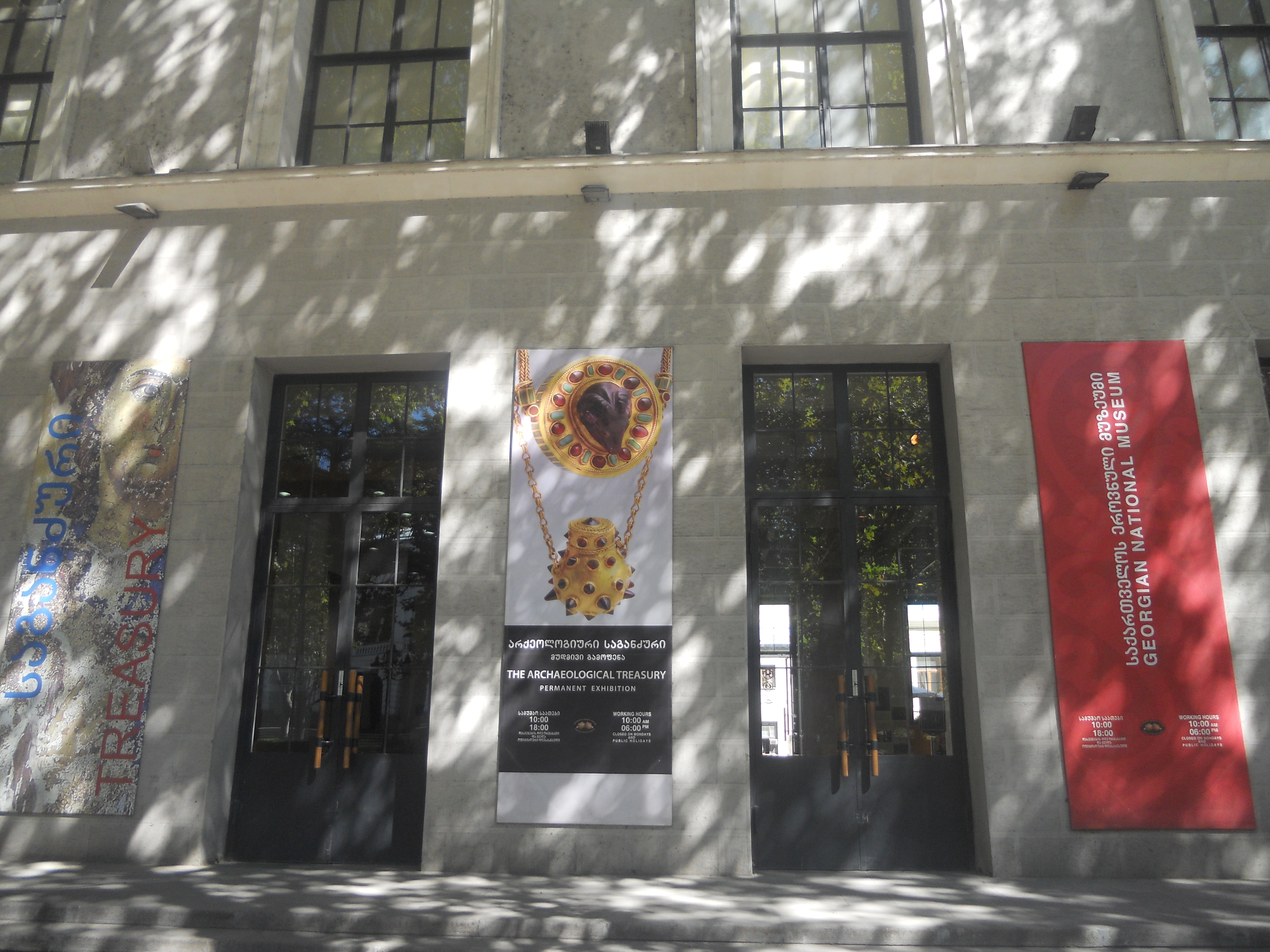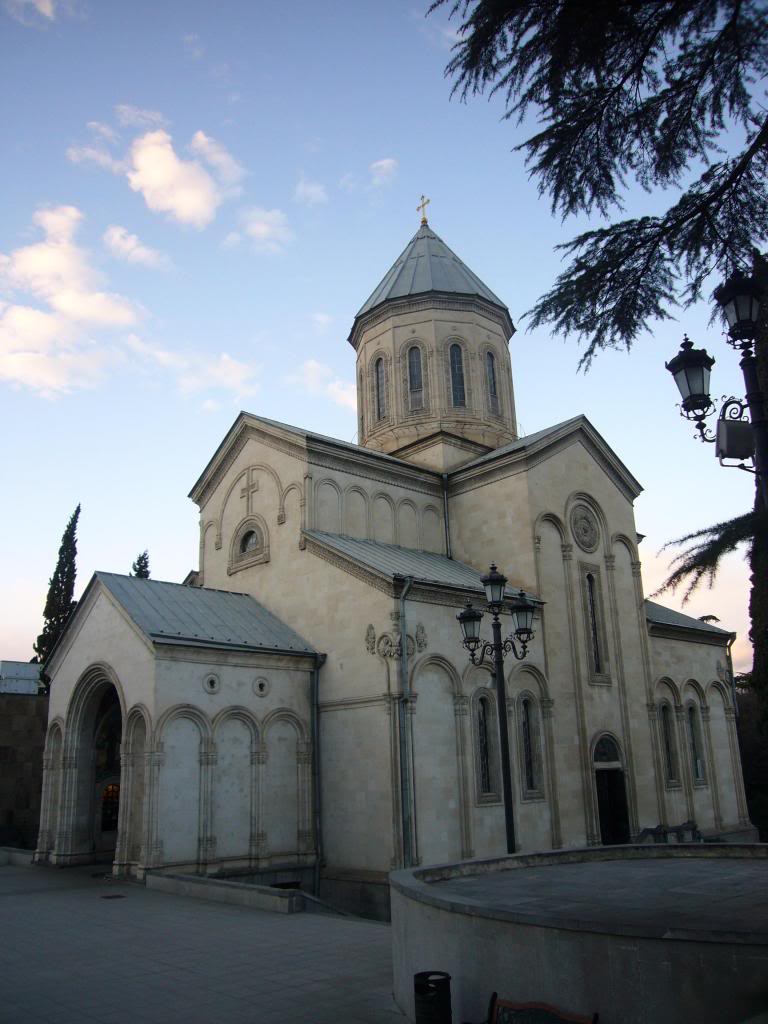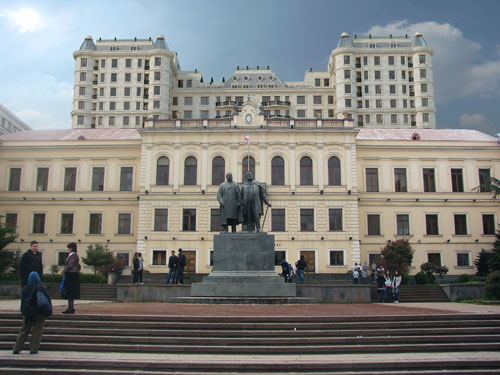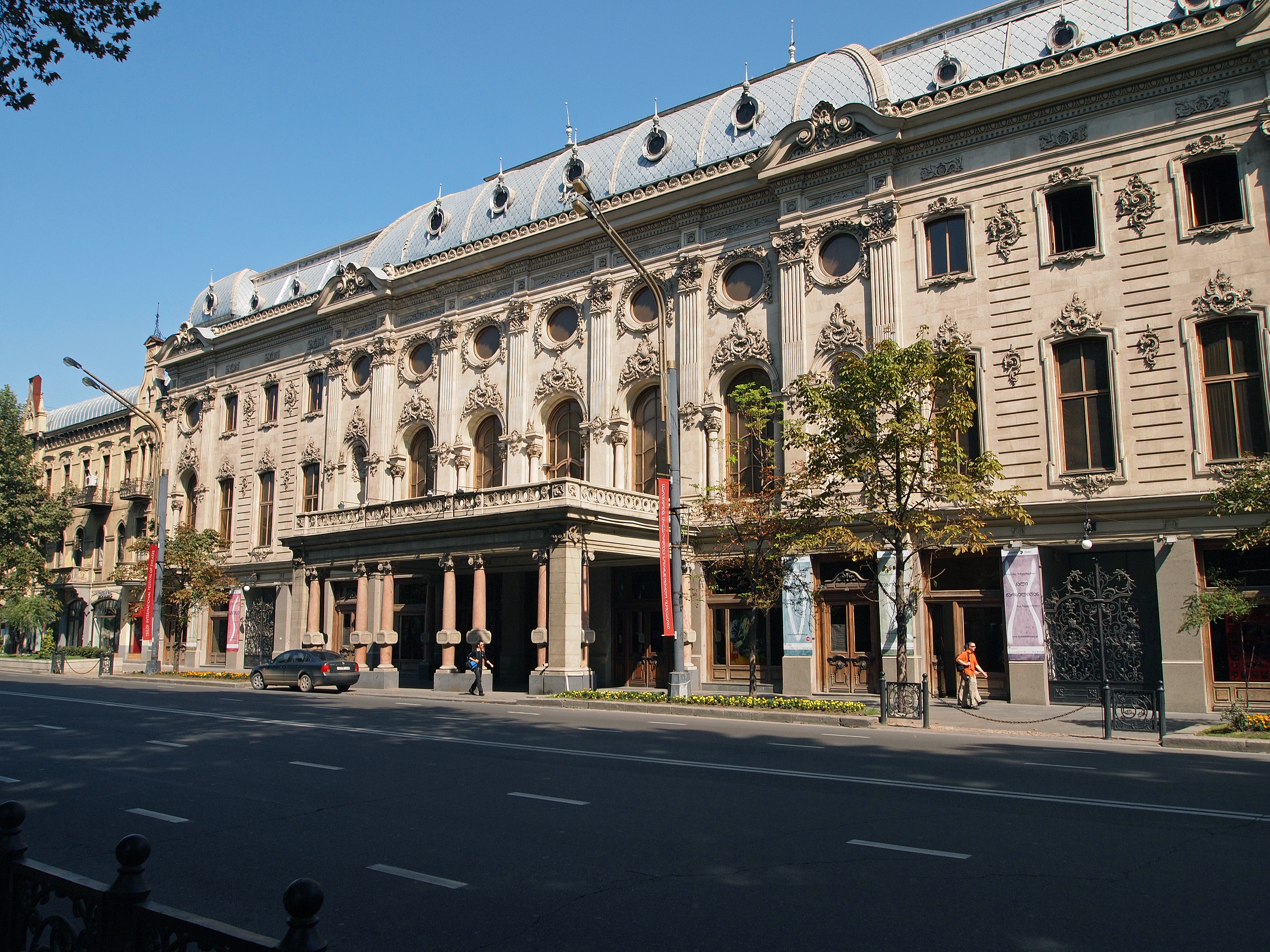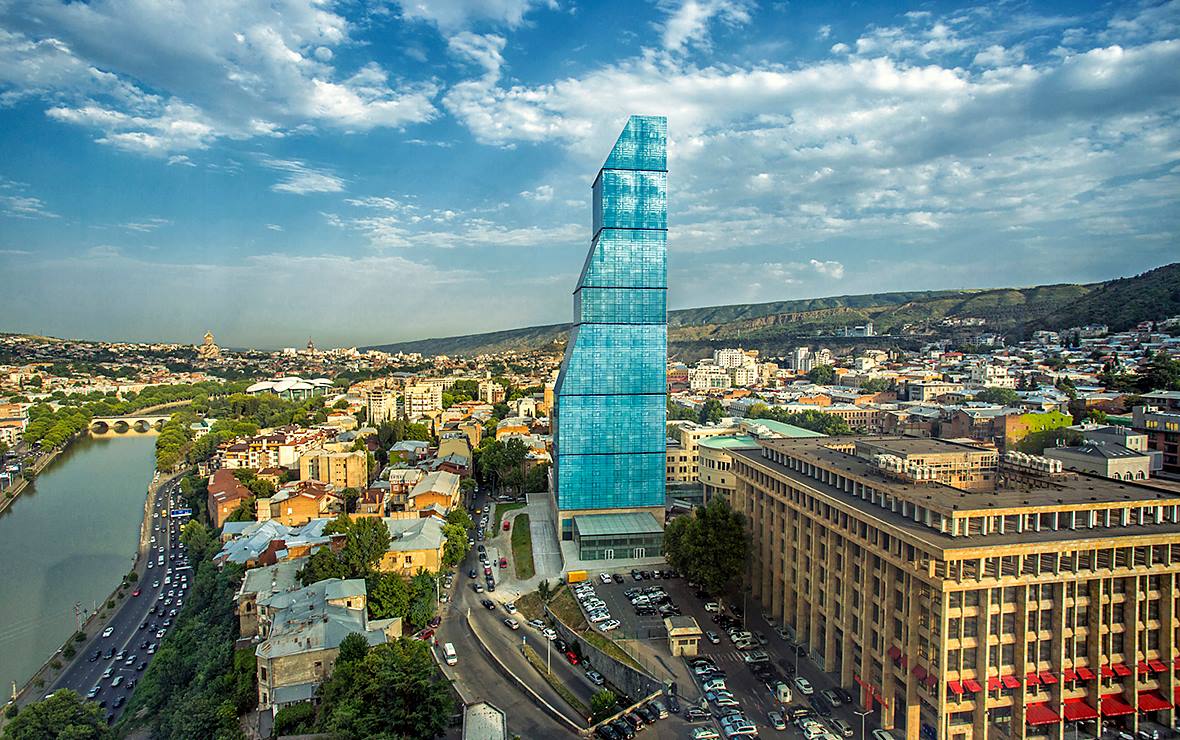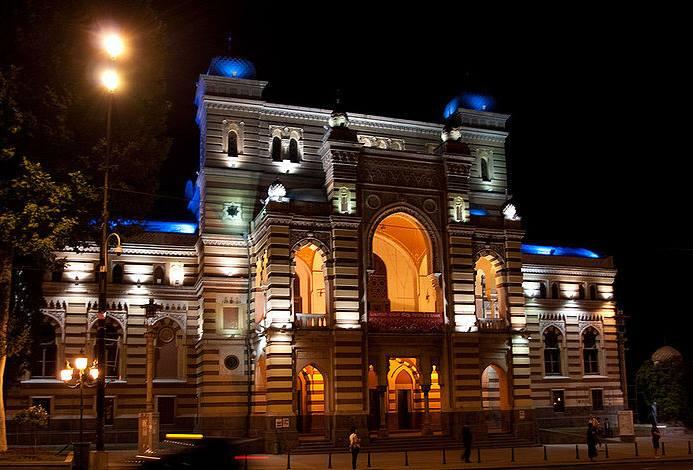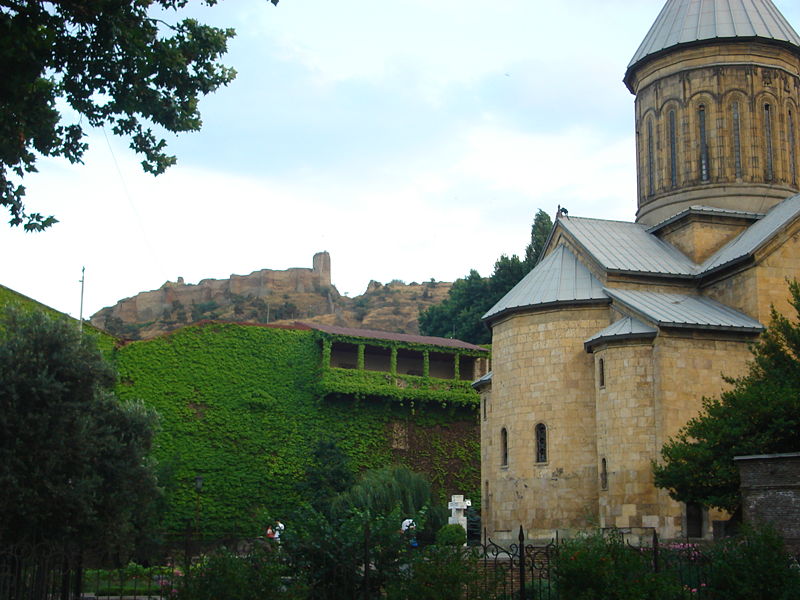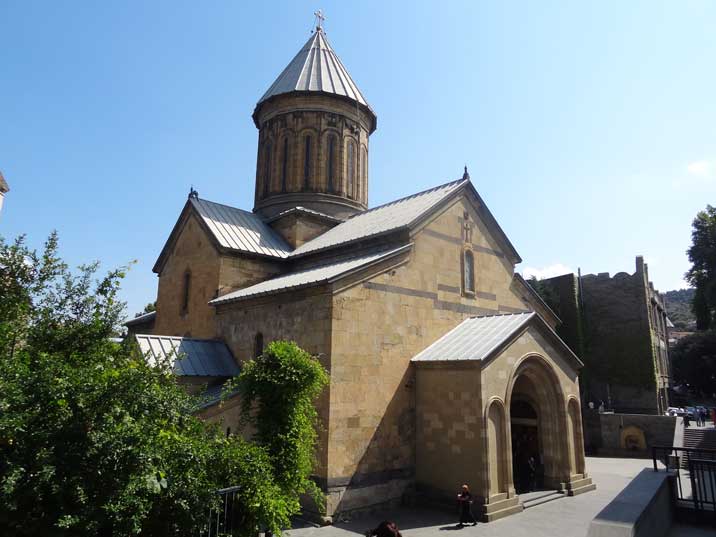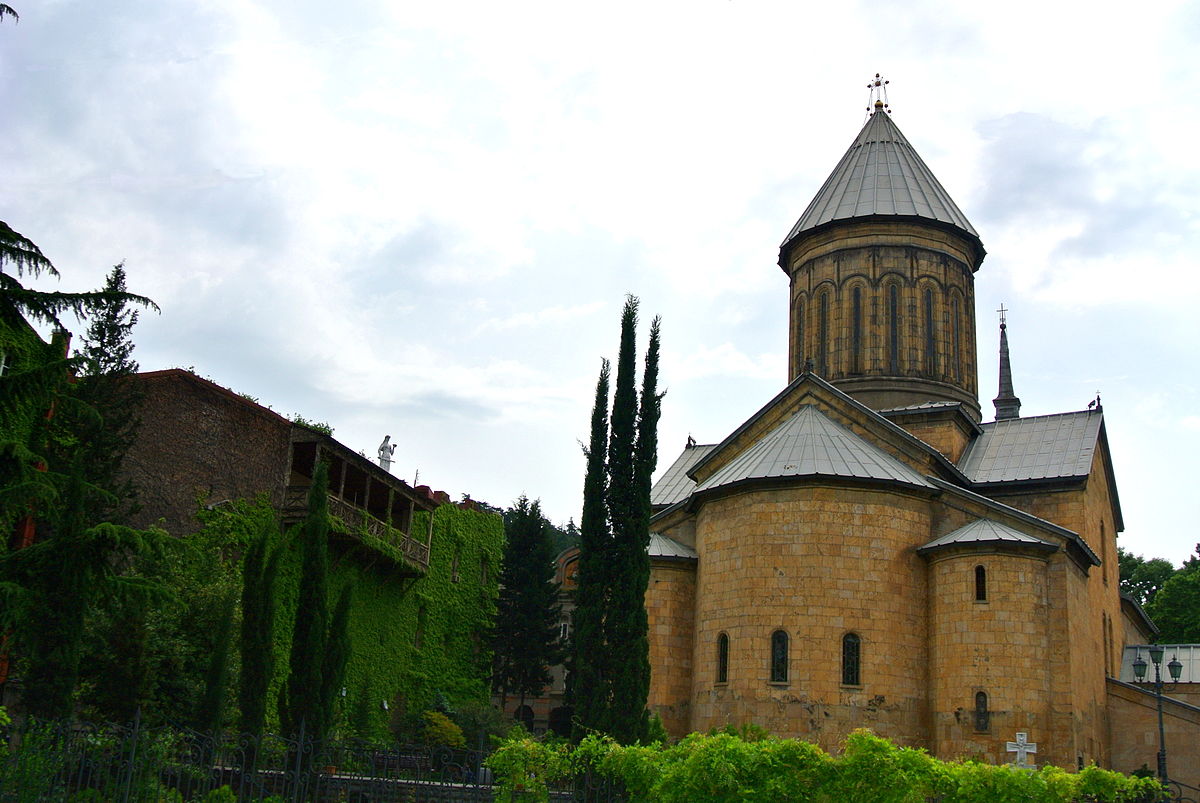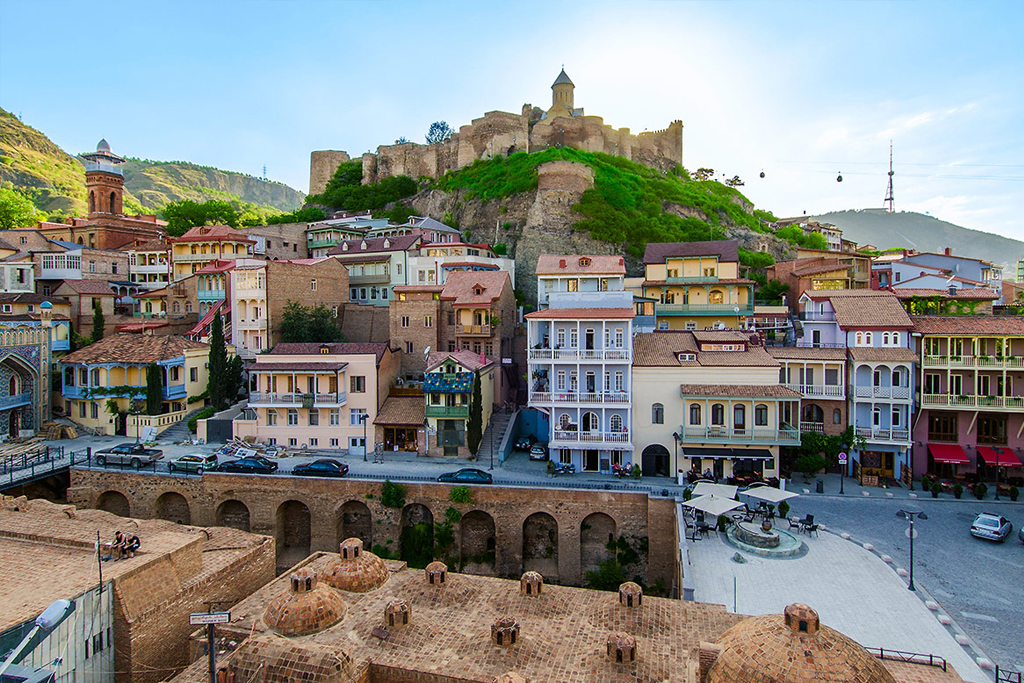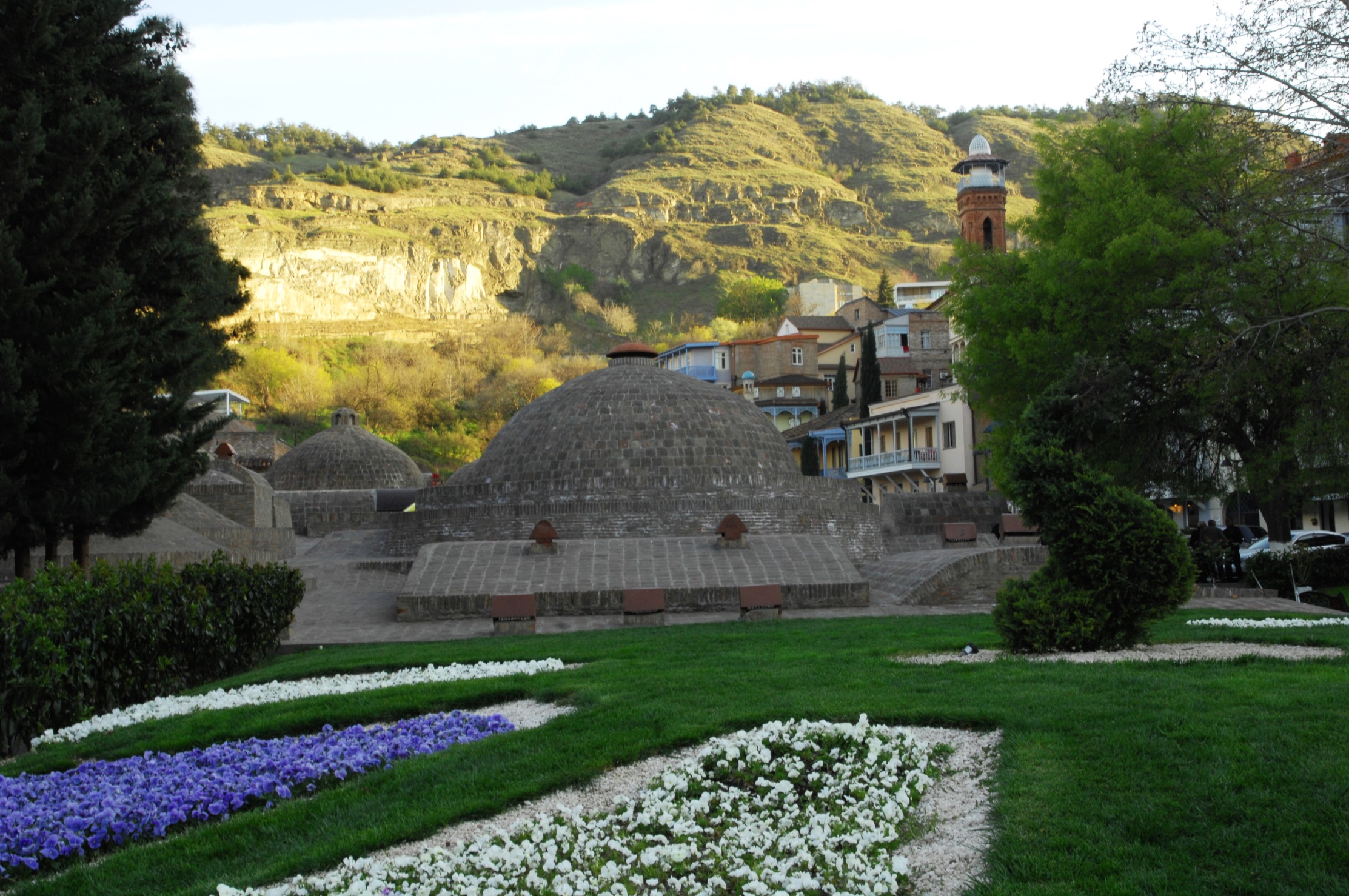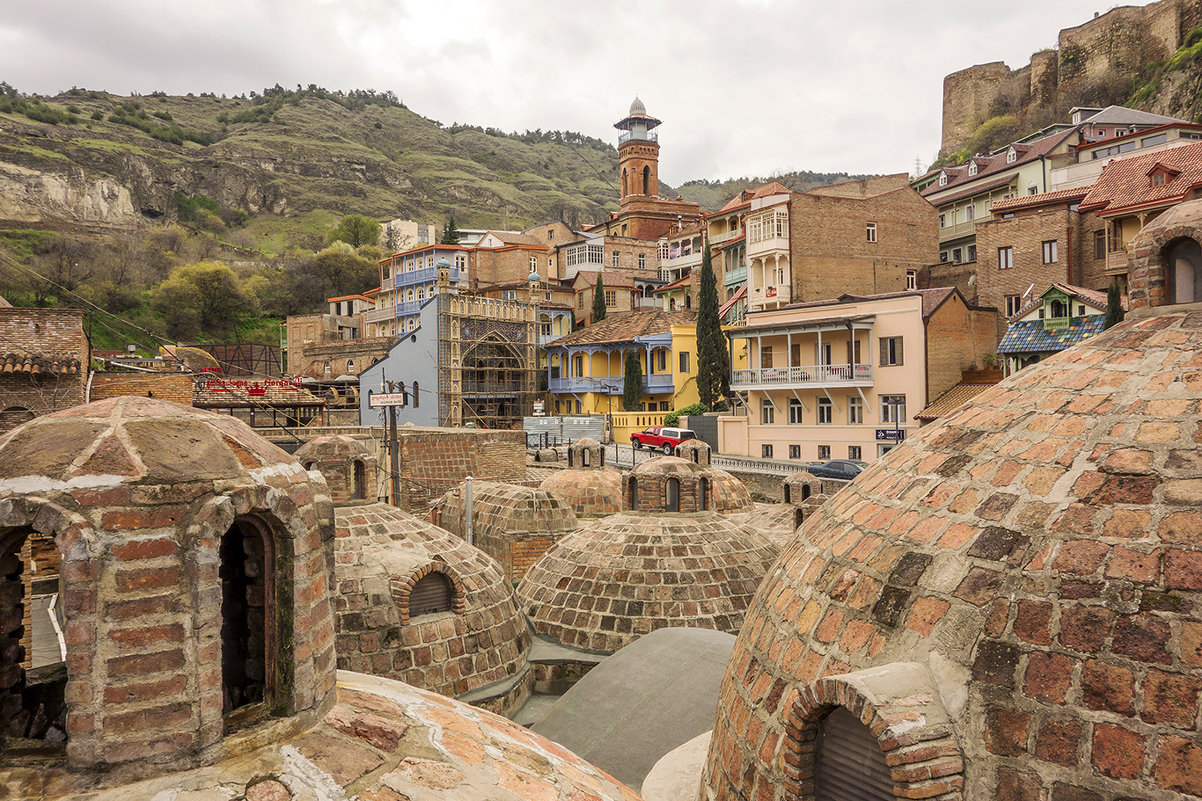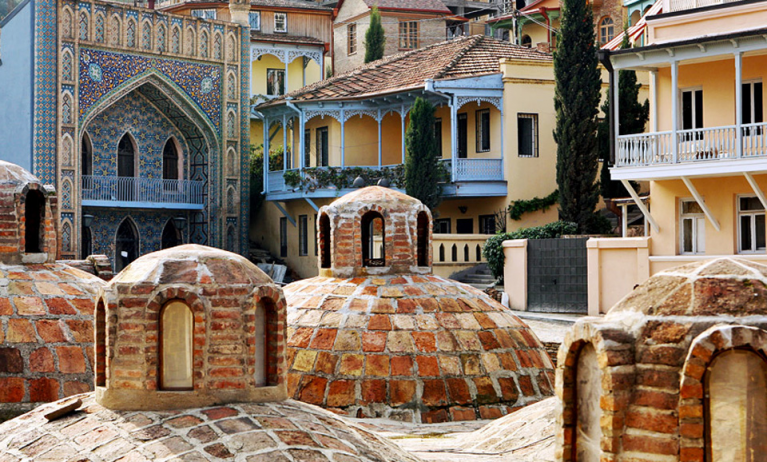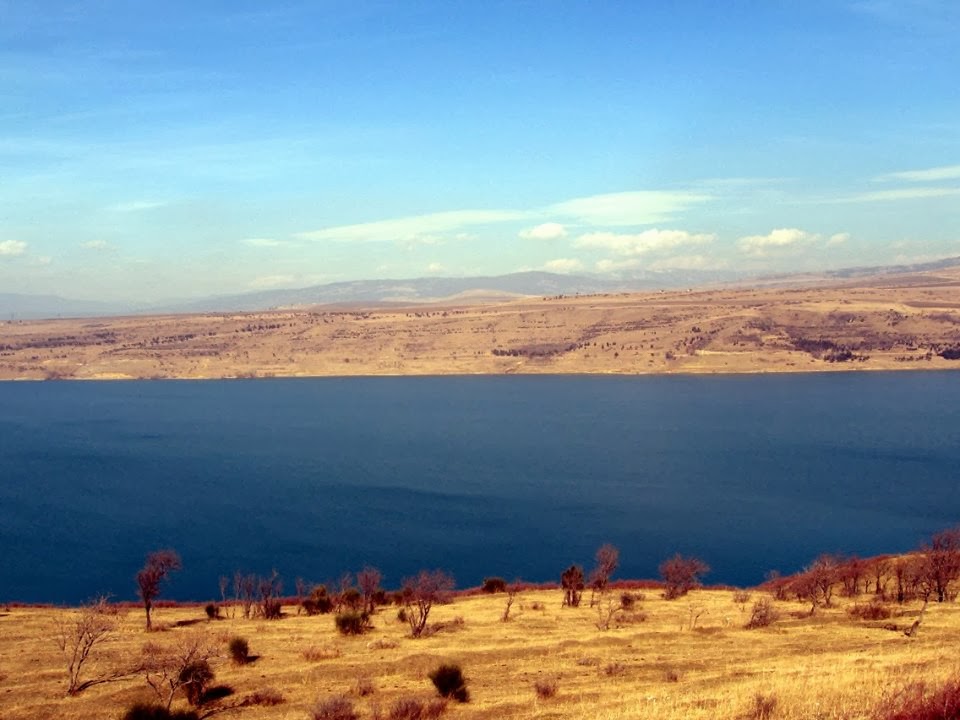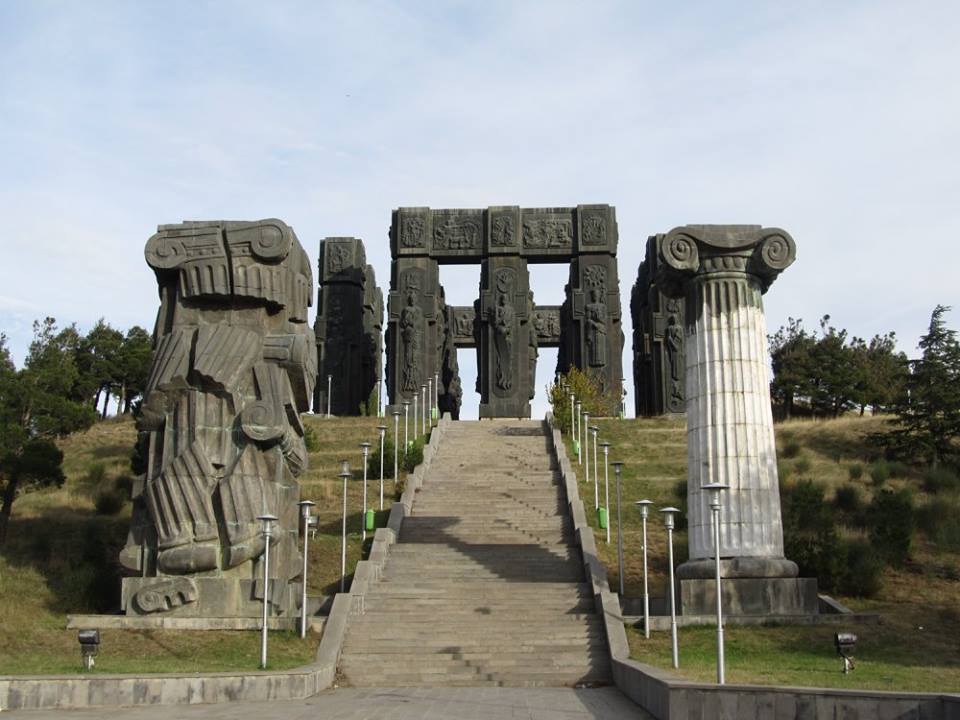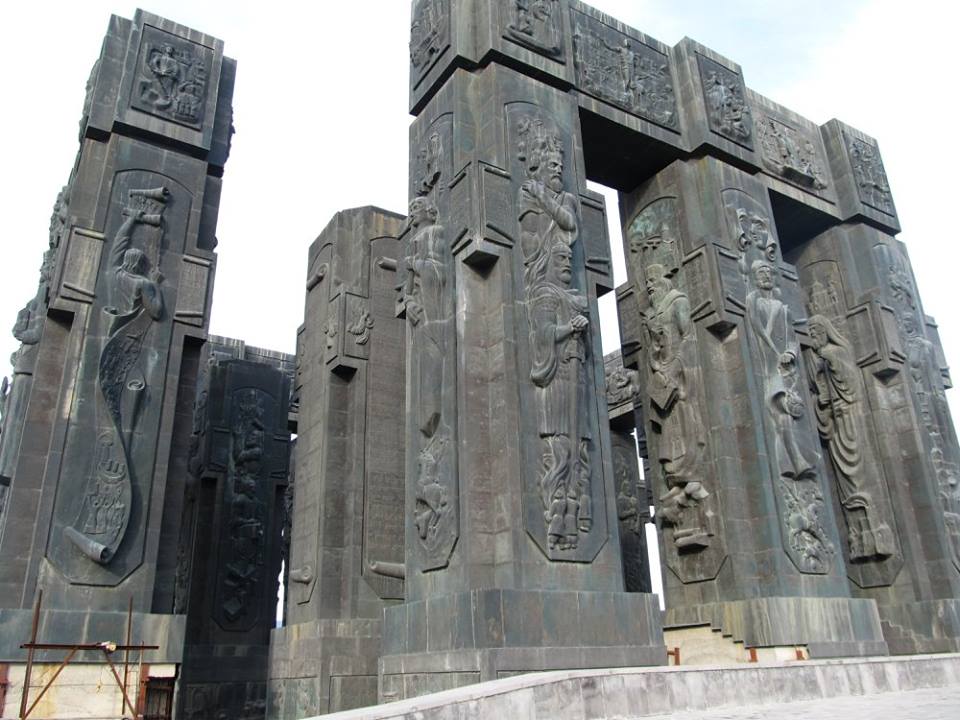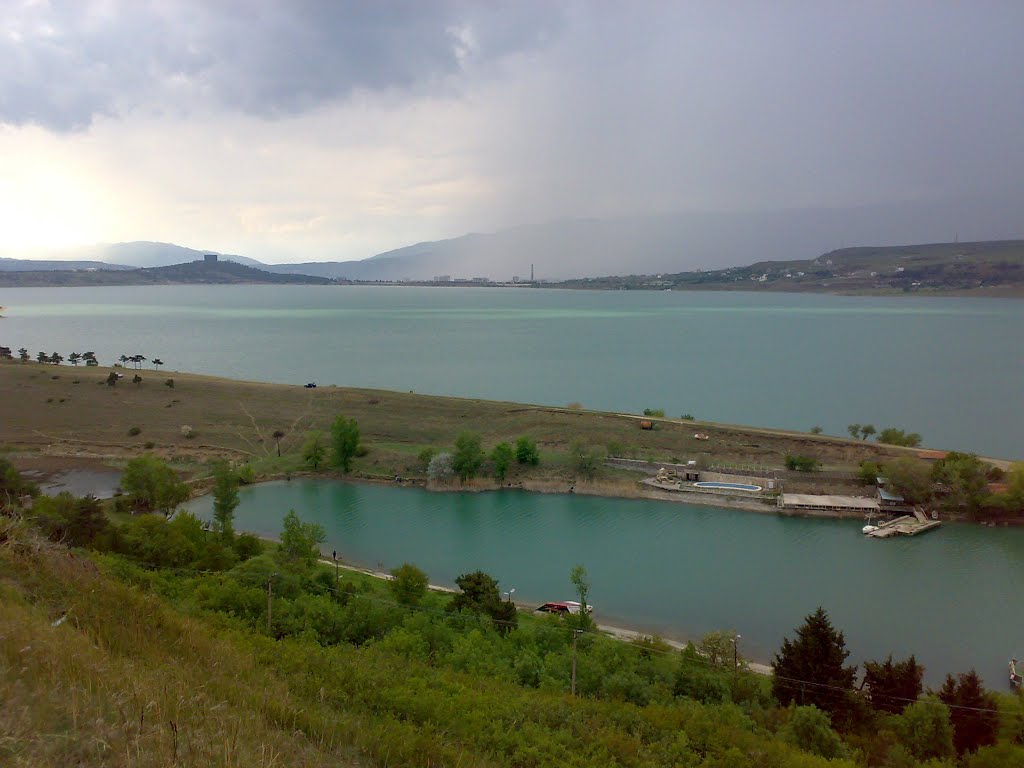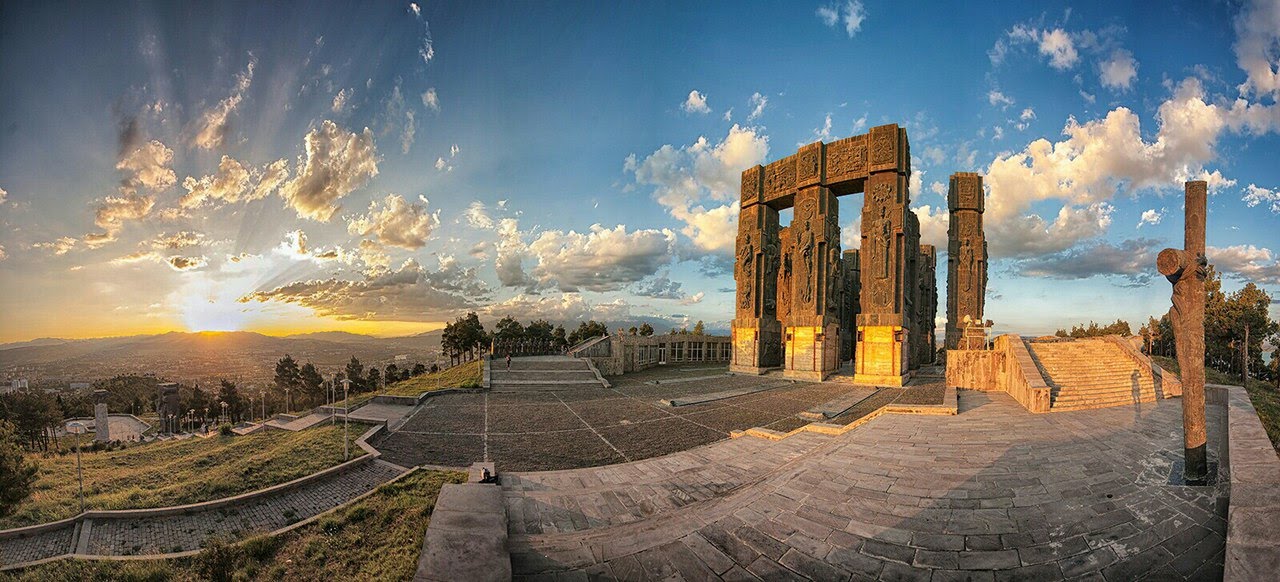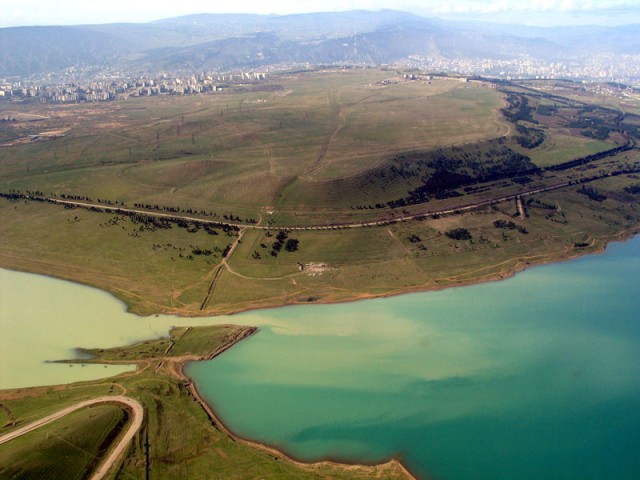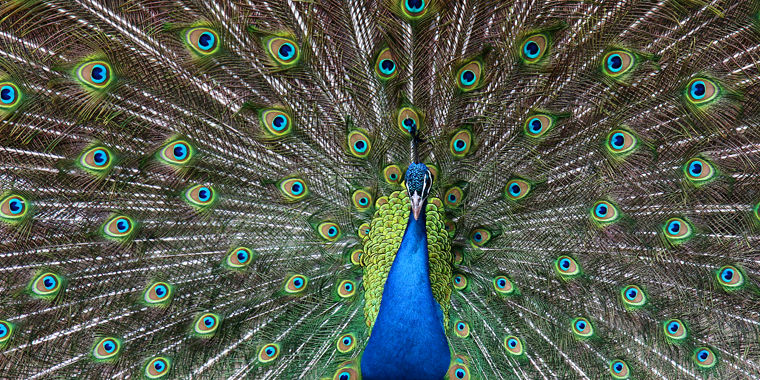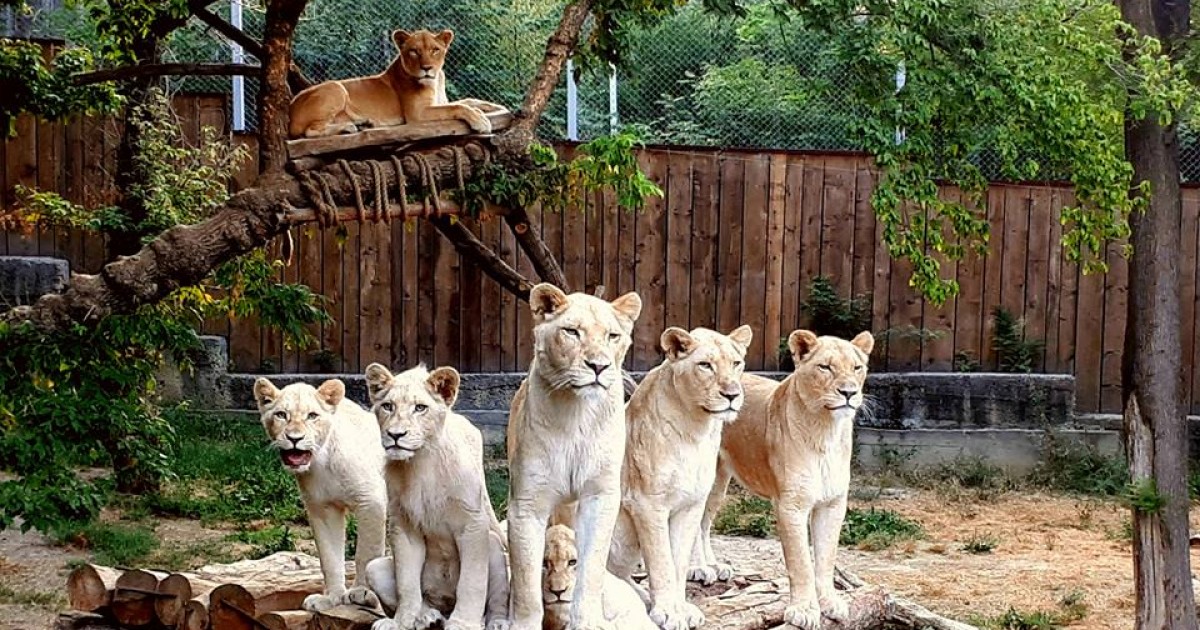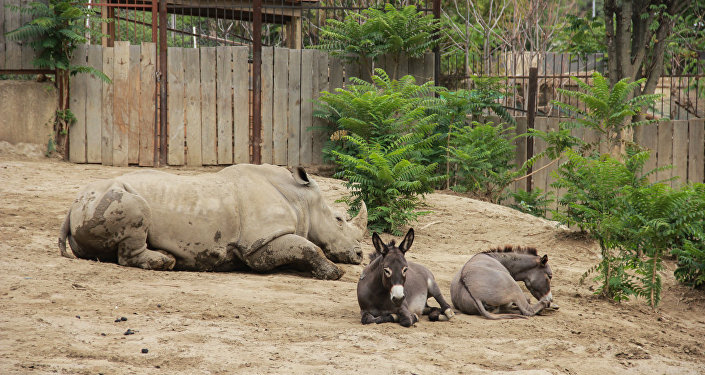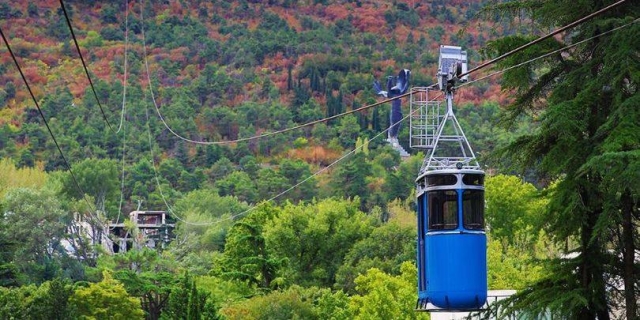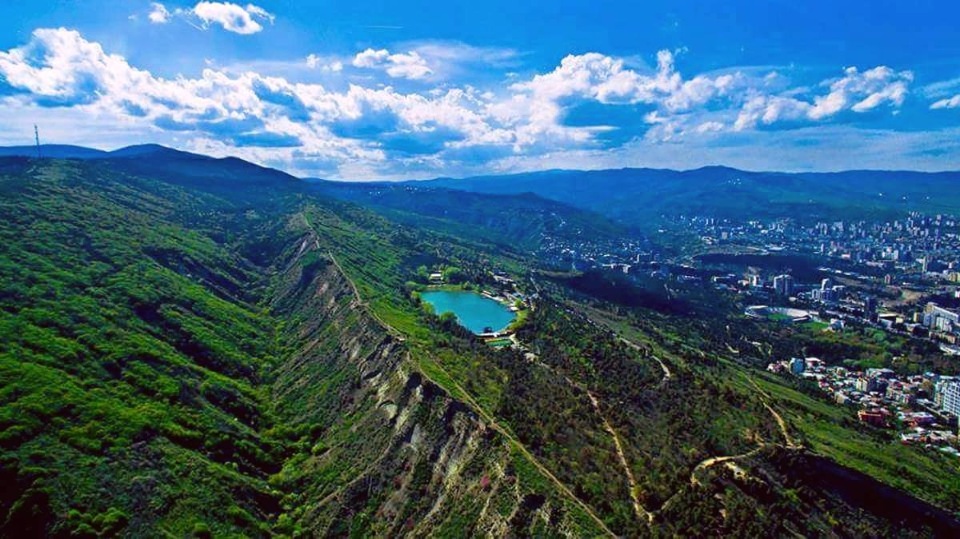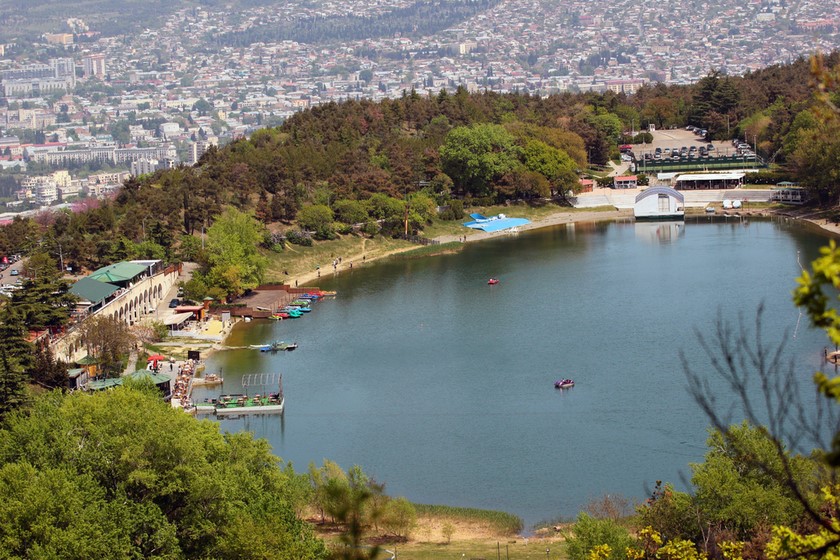ANCHISKHATI BASILICA
According to the old Georgian annals, the church was built by the King Dachi of Iberia (circa 522-534) who had made Tbilisi his capital. Originally dedicated to the Virgin Mary, it was renamed Anchiskhati (i.e., icon of Ancha) in 1675 when the treasured icon of the Savior created by the twelfth-century goldsmith Beka Opizari at the Ancha monastery in Klarjeti (in what is now part of northeast Turkey) was moved to Tbilisi so preserve it from an Ottoman invasion. The icon was preserved at the Basilica of St Mary for centuries (it is now on display at the Art Museum of Georgia).
The Anchiskhati Church, 1890
The basilica was damaged and rebuilt on several occasions from the 15th through 17th centuries due to wars between Georgia and the Persians and Turks. The brick belfry near the Anchiskhati Basilica was built by Catholicos Domenti in 1675.
The look of the structure was drastically changed in the 1870s, when a dome was added. During the Soviet period, all religious ceremonies at Anchiskhati Basilica were halted, and the building transformed into a museum for handicrafts. It was later used as an art studio. From 1958 to 1964 restoration works took place in celebration of the 1500th Jubilee of the founding of Tbilisi, which changed the view of the church back to the seventeenth-century version, however, it was not until 1991, after the independence of Georgia was restored, that the basilica reverted to religious use.
The Anchiskhati Choir based out of the Anchiskhati Basilica is the world’s leading exponent of Georgian polyphonic choral music.
BOTANICAL GARDEN
The Garden’s collection contains flora from the Caucasus region, China , the Himalayas, Japan, North America , Turkey, Siberia and the Mediterranean.
The Garden’s history spans more than three centuries. It was first described in 1671 by the French traveler Jean Chardin and is thought to have been founded as a royal garden in 1625. The gardens were pillaged during the Persian invasion of 1795 but restored in the early 19th century and officially established as the Tiflis Botanical Garden in 1845.
BRIDGE OF PEACE
in the evening and night time every hour thousand bulbs translate Morse code message, visible to both of parapets of the bridge.
FLEA MARKET
There is a mesmerising assortment of antiques, jewellery and bric-a-brac on sale.
FUNICULAR
The popularity of the Funicular was further increased when an entertainment and leisure park was constructed on the Mtatsminda plateau in the 1930s. In the days of the Soviet Union, Mtatsminda Park was the third most visited public park in the USSR, Gorky Park in Moscow being number one.
It was closed in 2000 following an accident, but reopened in 2012 after a comprehensive reconstruction project that renovated the stations and replaced the drive mechanism, rails, cars and safety equipment.
The Funicular is a great way to get to Mtatsminda Park. The restored station is in Chonkadze Street
HOLY TRINITY CATHEDRAL – SAMEBA
KASHVETI
The first church on this place appeared in the 6th century, and the history of its appearance is partly related to David Gareja, one of the Assyrian fathers preaching Christianity in Georgia.
Today Kashveti church, the outcome of the German, Italian and a Georgian collaboration, is one of the best architectural monuments of Tbilisi created in classical Georgian style.
MAMA-DAVITI CHURCH AND PANTHEON
In 1829, Russian poet Alexander Griboyedov was buried next to the church, and after that it became quite a tradition for important people to find their final resting place in the area.
It’s a quiet and nice spot to watch Tbilisi from the height.
MEIDAN SQUARE
METEKHI
The district was one of the earliest inhabited areas on the city’s territory. According to traditional accounts, King Vakhtang I Gorgasali erected here a church and a fort which served also as a king’s residence; hence comes the name Metekhi which dates back to the 12th century and literally means “the area around the palace”. Tradition holds that it was also a site where the 5th-century martyr lady Saint Shushanik was buried. However, none of these structures have survived the Mongol invasion of 1235.
The extant Metekhi Church of Assumption, resting upon the top of the hill, was built by the Georgian king St Demetrius II circa 1278–1284 and is somewhat an unusual example of domed Georgian Orthodox church. It was later damaged and restored several times. King Rostom (r. 1633-1658) fortified the area around the church with a strong citadel garrisoned by some 3,000 soldiers. Under the Russian rule (established in 1801), the church lost its religious purpose and was used as a barracks (R. G. Suny, p. 93). The citadel was demolished in 1819 and replaced by a new building which functioned as the infamous jail down to the Soviet era, and was closed only in 1938.
Amid the Great Purges, the Georgian Communist chief Lavrenti Pavlovich Beria intended to destroy the church as well, but met a stubborn opposition by a group of Georgian intellectuals led by the painter and art collector Dimitri Shevardnadze. Beria replied to their urges, that it would surely be enough to preserve a scale model of the church so that people could see it in a museum, and then is said to have told Shevardnadze privately that if he gave up his efforts to save the church he would be appointed director of the future museum. The artist refused and was imprisoned and executed (Ami Knight, p. 84). The building was preserved, however. In the later part of Soviet period the church was used as a theatre. The equestrian statue of King Vakhtang I Gorgaslan by the sculptor Elguja Amashukeli was erected in front of the church in 1961.
In the late 1980s, Catholicos-Patriarch of All Georgia Ilia II launched a popularly supported campaign aiming at the restoration of the church to the Georgian Patriarchate. A well-known dissident and the future president of Georgia Zviad Gamsakhurdia went on a hunger strike in support of this demand. Despite initial resistance from the local Communist leadership, the church became functioning again in 1988.
MTATSMINDA PARK
NARIKALA FORTRESS
The fortress was established in the 4th century as Shuris-tsikhe (i.e., “Invidious Fort”) and it was a Persian citadel. It was considerably expanded by the Umayyads in the 7th century and later, by king David the Builder (1089–1125). The Mongols renamed it “Narin Qala” (i.e., “Little Fortress”). Most of extant fortifications date from the 16th and 17th centuries. In 1827, parts of the fortress were damaged by an earthquake and demolished.
NATIONAL MUSEUM OF GEORGIA
The museum was established by the Department of Russian Imperial Geographic Society in 1825. For the entire period of existence of the museum, it had suffered several considerable hardships: one fire, change of names, total move (in 1921 after the seizure of power by the Bolsheviks, the entire collection was taken out to Europe, it only came back in 1945).
The museum holds a golden collection of valuable finds that belong to different periods and epochs presented in the consequence from the Bronze Age (3500-1200 B.C.) up to 20th century. One can find there the major part of samples of the Caucasian national culture.
The first floor is dedicated to the ancient history of Georgia. Items discovered during the excavations at the Trialeti kugran (dating back to the 2nd century B.C.) are of great value. Archaeologists managed to find various vessels from metal (mainly gold and silver), samples of ceramic items, and jewelry pieces. The golden cup adorned with gems and geometric pattern gained fame all around the world. Some of the weaponry and collection of coins are dated with 5th and 6th centuries. In addition, works of ancient artisans, samples of clothing of different times, fabrics and carpets are displayed there.
One of the interesting finds is fossils of the hominid Homo ergaste. Scientists proved that their age was 1,8mln years. These are the most ancient fossils that certify the existence of humans beyond Africa at those times. All other human fossils of similar age were found only within the bounds of African territory. Another valuable find is the collection of Urartian inscriptions on rocks. These fragments make up a unique exposition of its kind.
The Museum of the Soviet Occupation is located on the second and third floors; visit to this part is also included in the ticket price. There are many interesting expositions for those who are interested in the contemporary history. There is a stylus used to sign the declaration of independence of Georgia among exhibits.
The building of the museum is spacious and large. A visit to this place gives an understanding of interesting, ancient and culturally rich history of the Georgian nation.
RUSTAVELI AVENUE
The avenue starts at Freedom Square and extends for about 1.5 km in length, before it turns into an extension of Kostava Street. Rustaveli is often considered the main thoroughfare of Tbilisi due to a large number of governmental, public, cultural, and business buildings that are located along or near the avenue. The former Parliament of Georgia building, the Georgian National Opera Theater, the Rustaveli State Academic Theater, the Georgian Academy of Sciences, Kashveti Church, Simon Janashia Museum of Georgia (part of the Georgian National Museum), and Biltmore Hotel Tbilisi among others, are all located on Rustaveli.
In 1989, tens of thousands of Georgians gathered before the House of Government on Rustaveli Avenue. An attack by the Soviet Spetsnaz forces killed many protesters in the April 9 tragedy.
In 2007 and 2011, the avenue was the site of anti-government protests.
SIONI CATHEDRAL
The Tbilisi Sioni Cathedral is situated in historic Sionis Kucha (Sioni Street) in downtown Tbilisi, with its eastern façade fronting the right embankment of the Kura River. It was initially built in the 6th and 7th centuries. Since then, it has been destroyed by foreign invaders and reconstructed several times. The current church is based on a 13th-century version with some changes from the 17th to 19th centuries. The Sioni Cathedral was the main Georgian Orthodox Cathedral and the seat of Catholicos-Patriarch of All Georgia until the Holy Trinity Cathedral was consecrated in 2004.
SULFUR BATHS
All baths are situated in the old town and placed on a “bathhouse” street.
There were also luxurious baths for the princess, baths for gentlemen and officers, and baths for local inhabitants.
The warm sulfurous bath – is a significant historic place, around which grew the present capital of Georgia – Tbilisi.
TBILISI SEA
TBILISI ZOO
The Tbilisi Zoo was established by the decision of the Tbilisi City Council on 10 February 1927. It was designed by a group of Georgian and Russian specialists. The Zoo was further expanded in the 1930s. Initially the Zoo consisted of 4 sections: Caucasian or Local; Fauna of the USSR; Exotic animals; Agricultural animals.[1]At its heyday in the 1970s, the Tbilisi Zoo was home to more than 1,000 animals and enjoyed more than 500,000 visitors per year. The Zoo, largely depending on dwindling funding allocated from the city budget, went into decay as a corollary of an economical collapse and political unrest that hit post-Soviet Georgia in the 1990s. A World Society for the Protection of Animals representative, Neil Trent, reported in 1993 that more than half of the animals at the zoo had died of starvation or cold since 1991.
The Zoo experienced a modest revival in the late 2000s. A marine aquarium, the first such establishment in the Caucasus, was opened in 2007. The Zoo belongs to the Tbilisi City Hall and largely depends on funding allocated from the city budget. In 2012, the government of Tbilisi decided to relocate the zoo from the city’s centre to a zoological and recreation complex adjacent to the Tbilisi Sea, a large reservoir at the eastern outskirts of Tbilisi. A project developed by the Australia-based architecture firm Hassell was to include “an entrance hub, boulevard, a secondary hub with playground and café, inner zoo and an outer open range zoo as well as woodland areas.” Due to the lack of funds, the relocation was delayed and the zoo remained at its old location, when, on 14 June 2015, the swollen Vere river flooded the zoo. Several of its inhabitants died, while many surviving animals, such as a hippopotamus, lions, tigers, bears, and wolves, escaped to the streets of Tbilisi. Some animals were recaptured but several were shot by emergency forces. In total, the zoo lost nearly half of its inhabitants.
TURTLE LAKE
Turtle Lake is located on the wooded northern slope of Mtatsminda Mount at elevation of 686.7 m above sea level and fed by a small river Varazis-Khevi, a tributary to the Mtkvari. The area of surface is 0.034 km², while the catchment area is 0.4 km². Maximal depth is 2.6 m.
The Turtle Lake area is designed as a recreational zone and is frequented by the Tbilisians on weekends. It is also a place where festivals and concerts are held. It can be reached either via a road or an aerial tramway leading from Tbilisi’s Vake Municipality – this began operating once more in October 2016. West to the lake is the Open Air Museum of Ethnography, a large exhibition of Georgia’s folk architecture.

